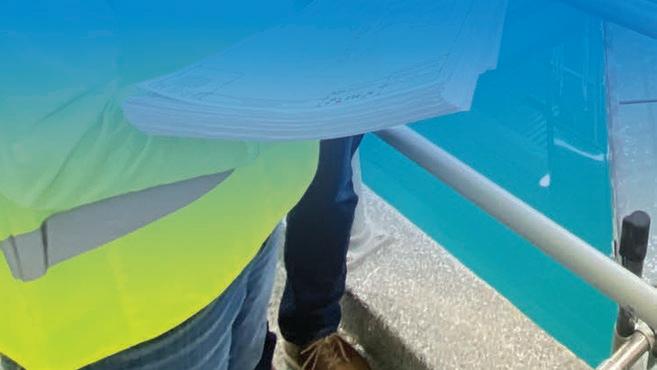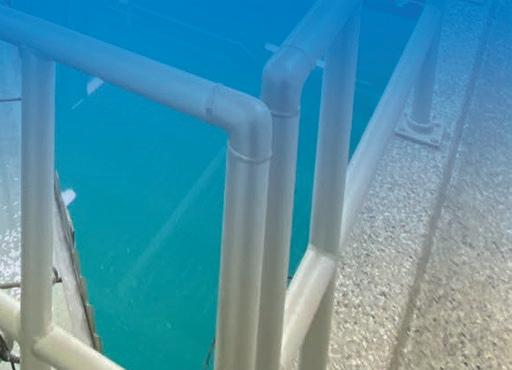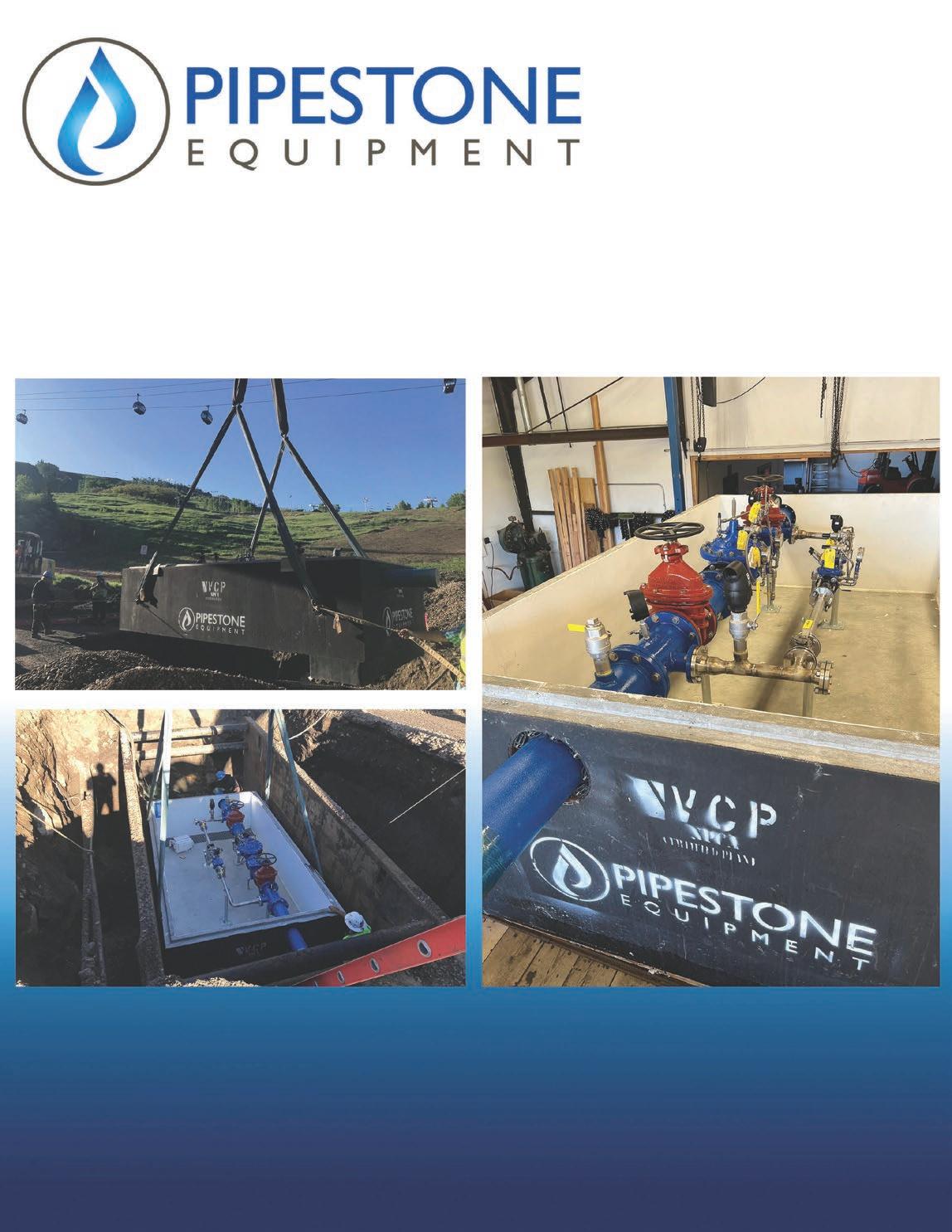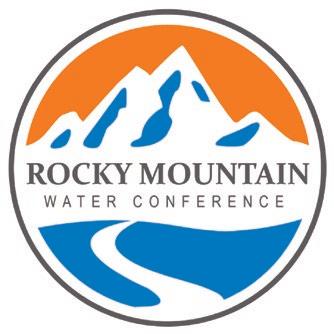











Conquer your engineering and construction challenges with our design-build solutions
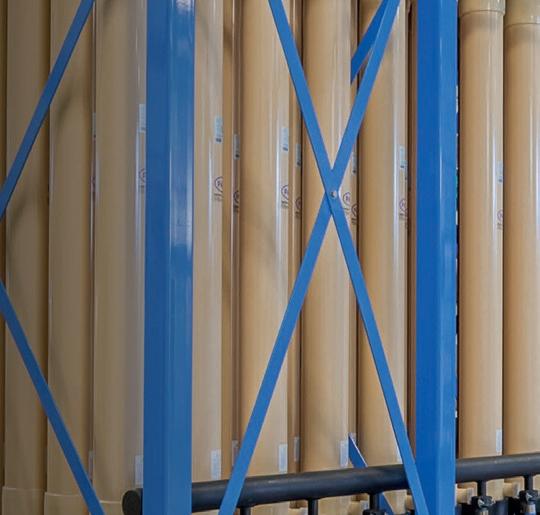
EXPLORE OUR SOLUTIONS

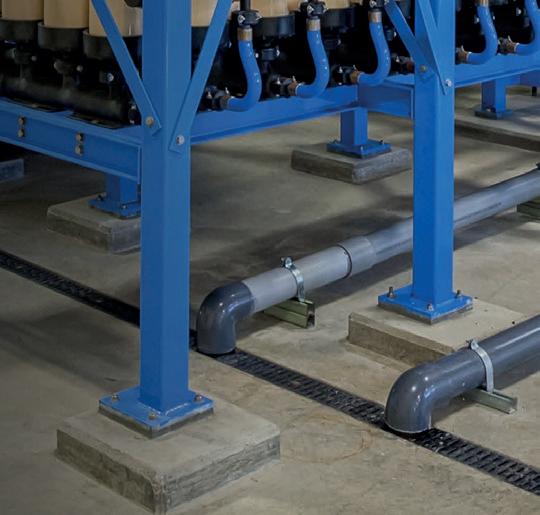




Southeast SWTF (54 MGD BAF)
Fresno, CA










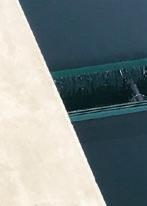







Bailey WTP (50 MGD BAF)
Colorado Springs, CO





















Conquer your engineering and construction challenges with our design-build solutions

EXPLORE OUR SOLUTIONS






Southeast SWTF (54 MGD BAF)
Fresno, CA


















Bailey WTP (50 MGD BAF)
Colorado Springs, CO








Orthos has demonstrated a long track record of success in BAFs and BACs, and with our monolithic design, repeatedly responds to utilities’ demands of resiliency, reliability, and permanency.


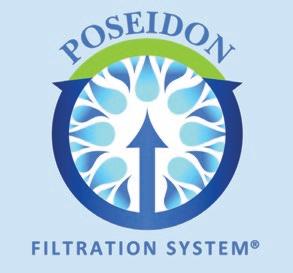







Mary Elizabeth Mach is passionate about securing and protecting public water supplies in Colorado for generations to come. And, with the backing of a nationwide firm with over 100 years of service, she and Garver’s team of experts are well equipped to meet the toughest challenges facing utilities and communities in the region.
Mary
Elizabeth
Mach, PE West Region Water Director

GarverUSA.com






Rocky Mountain Water Magazine Group
The following volunteers support RMSAWWA and RMWEA with content collection, management, editing, and reviewing the magazine.
BLAIR CORNING bcorning@englewoodco.gov
ANDREW DUGAN andrew.dugan@waterwrites.co
KARI LARESE klarese@hrwater.org
RMSAWWA Communications Committee
KARI LARESE, Chair klarese@hrwater.org
ERIN RIDOLFO, eNewsletter Editor eridolfo@rmsawwa.org
RMWEA Communications Committee
ELIZABETH DEWAARD, Co-Chair edewaard@englewoodco.gov
JORI NELSON, Co-Chair jori.nelson@hdrinc.com
NATALIE COOK, eNewsletter Reviewer ncook@auroragov.org
ANDREW DUGAN, eNewsletter Reviewer andrew.dugan@waterwrites.co



ROCKY MOUNTAIN VIEW
From the RMWEA President 7 From the RMSAWWA Chair 9
COMMITTEE SPOTLIGHT
Infrastructure Investment and Jobs Act Impacts and Outlook 13
MANAGEMENT PIPELINE
Empowered Women, Empowering Women: Reflections from the RMWEA Women in Water Event 17
Denver Water’s Lead Replacement Program
Navigating Regulatory Compliance: How Small Water and Wastewater Utilities in Colorado Can Succeed
Mitigating the Risk of PFAS for Drinking Water and Domestic Wastewater Utilities
the 2025 National Water Policy Fly-In 43 SCIENCE, RESEARCH, AND TECHNOLOGY Collaborating to Meet Regulation 85’s Monitoring Requirements.................................... 47 COMMITTEE CORNER Why DEI Still Matters in the Water and Wastewater Industry 51
Tel: 866-985-9780 Fax: 866-985-9799 info@kelman.ca www.kelman.ca
Managing Editor: Mathias Leiendecker
Marketing Manager: Chad Morrison Design/Layout: Jackie Magat
Advertising Coordinator: Sabrina Simmonds

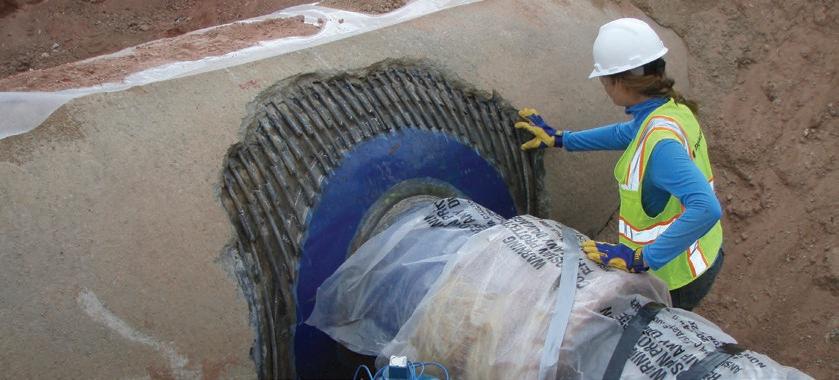
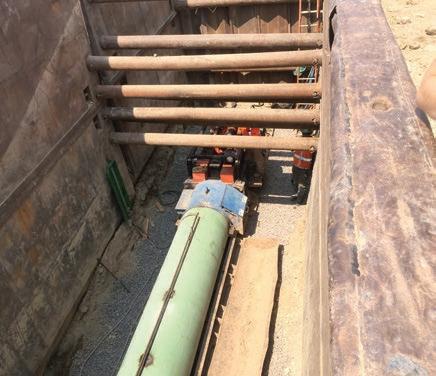


FROM THE RMWEA PRESIDENT
Clay Rahn, RMWEA President, Senior Water/Wastewater Project Manager, HDR, Inc.
Isn’t summertime a wonderful time here in Wyoming, New Mexico and Colorado?
The changing seasons provide a muchneeded hiatus from bone-chilling weather and offer a chance to soak in the sun. Don’t misunderstand, I love spring, fall and winter as well, but our relatively mild summers here in the Rocky Mountain region are truly special to me. See, most of my life, I have dreaded the summer. Riverside, California (where I grew up) and Fort Worth, Texas (where I lived for 10 years just before Colorado) both hit triple-digit heat for an average of 30 days each summer. By contrast, Denver only experiences a gloriously low 2.5 days above the dreaded century mark each summer!
You may be thinking, “Clay, what do 100-degree days and your move to Denver have to do with our new vision, mission, values and strategic plan?” Well, not a great deal, except for one important thing: change, as challenging as it is (like uprooting your life, in part for cooler summers), can be good. Our new VMV and SP will somewhat change RMWEA, and it will be challenging, but good!
While the new VMV and SP are still in development by a core team of about 10 RMWEA officers and board members, I would still like to offer a brief sneak peek into what can be expected. We included words to the VMV like “building,” “serving,” “purpose,” “belonging,” and “empowering” while preserving the phrase “Elevating Water Professionals.” And our strategic plan captures four specific goals focused on workforce development, collaboration, industry visibility and technology. More to come, stay tuned!


It cannot be overstated that I am so grateful to all of the very gifted professionals who have guided and contributed to this important initiative so far. It would be a mess without you. I simply cannot say “thank you” enough!



While there is still some work to be done during a few remaining meetings and with solicitations for content review, we are still expecting to meet our goal of rolling out everything during the RMWEA Business Lunch at the Rocky Mountain Water Conference (RMWC) on Tuesday, August 26. I cannot think of a better reason to register for the RMWC and RMWEA Business Lunch than to witness this reveal in person, can you? My excitement may be causing a tiny bit of bias, and sorry, it will also produce a shameless plug: The RMWC runs from August 24-27 in beautiful Keystone, Colorado, if you haven’t already signed up. In addition, it cannot be overstated that I am so grateful to all of the very gifted professionals who have guided and contributed to this important initiative so far. It would be a mess without you. I simply cannot say “thank you” enough!
Switching gears from the VMV and SP, I want to highlight our talented student teams from the University of Colorado,
University of New Mexico, and Colorado School of Mines who competed in the RMWEA Student Design Competition (SDC) on April 25. This year’s SDC problem statement focused on how to meet future effluent temperature regulations at the J.D. Phillips Water Reclamation Facility in Colorado Springs. I had the pleasure of watching the presentations and witnessing those bright students who are the future of water quality in America. Congratulations to the students from Mines who placed first and will represent RMWEA at the National SDC during WEFTEC in Chicago. Their solution was a heat exchanger/heat pump system that would reduce effluent temperatures to meet future regulations while recovering heat to be used elsewhere on-site. Mines: We will be cheering you on in Chicago!
With that, feel free to reach out to me at any time with questions or comments. I would love to hear from you! And thank you again for this amazing opportunity to serve you as President.


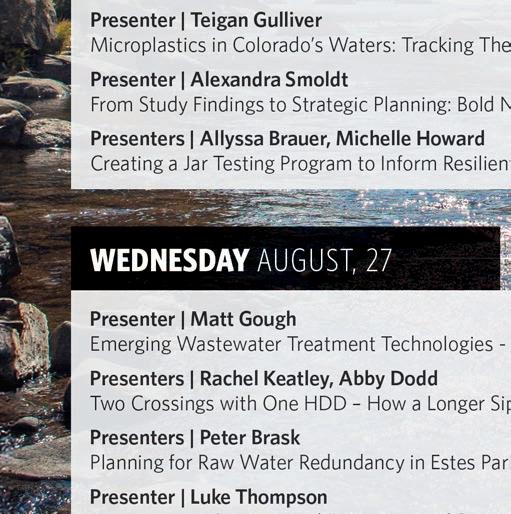
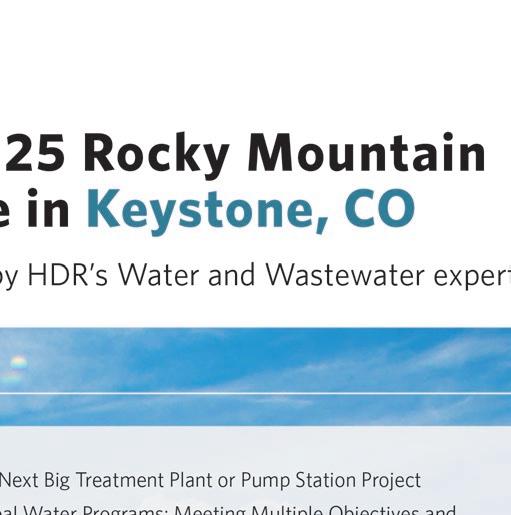
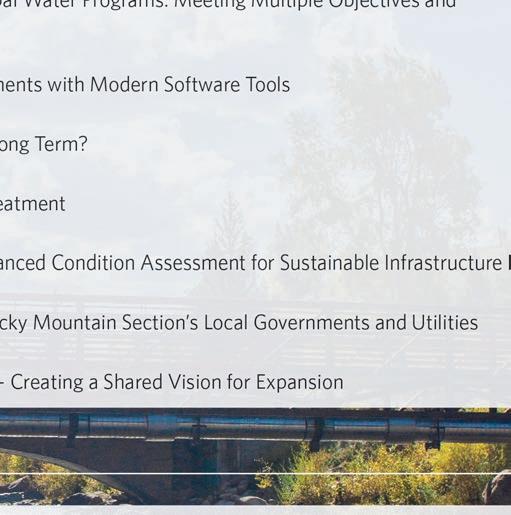



FROM THE RMSAWWA CHAIR
Stephanie Elliott, RMSAWWA Chair, Senior Project Manager, Stantec
Summer is in full swing, with longer days and the sun lingering just a little later in the sky. It’s a season where the lines between work and play blur – when colleagues gather for a round of golf, catch a baseball game, or enjoy a sunny afternoon at the park. It’s also a time when communities become even more aware of the essential role water plays in our daily lives. From increased demand and conservation efforts to innovative projects and public engagement, summer presents both challenges and opportunities for us as water professionals.
But above all, summer naturally brings a spirit of energy and rejuvenation –a time to think creatively, explore new approaches, and reinforce the collaborative spirit that defines our field. Whether we’re designing innovative solutions, partnering across disciplines, or sharing insights with peers, our work is always stronger when we do it together. As we navigate the busy months ahead, let’s take a moment to appreciate how creativity and collaboration continue to drive our industry and our Section forward.
One of our most impactful events of the season is the Summer Planning Meeting, where the Board and Committee Chairs
come together to assess progress, set priorities, and explore new ways to enhance the value we bring to our members. It’s a vital opportunity to strengthen relationships among board members, Committee Chairs, and Section staff, all while recommitting to our shared vision: “A Better World Through Better Water.”
Another key engagement is the AWWA Summer Workshop, where our board and staff connect with other Sections and AWWA leaders to exchange ideas and build on best practices around topics like member engagement, partnerships, and volunteer recognition. It’s a powerful space for inspiration, learning, and renewed commitment.



FROM THE FIRST HALF OF THE YEAR
With summer marking the midpoint of our calendar year, it’s the perfect time to reflect on some key accomplishments:
• The New Mexico Water Workshop celebrated its 10th anniversary in April with record-breaking attendance.
• Our Water Treatment Committee completed a successful filter surveillance at the end of May.
• Representatives from Colorado and Wyoming took part in the Water Fly-In in Washington, D.C., advocating for crucial initiatives such as full funding for State Revolving Funds.
Summer naturally brings a spirit of energy and rejuvenation – a time to think creatively, explore new approaches, and reinforce the collaborative spirit that defines our field. Whether we’re designing innovative solutions, partnering across disciplines, or sharing insights with peers, our work is always stronger when we do it together.
• The Supervisory Leadership Committee is launching its much-anticipated Leadership Webinar Series – check our website for more information.
• Our Action Now Seminars continue to deliver high-quality training across Colorado. Upcoming dates and locations can be found on our website. We’re proud of the momentum we’ve built and are excited for the continued engagement and innovation the rest of the year holds.
AWWA ACE25 rolled into Denver from June 8–12, bringing together water professionals from across all 43 Sections. This flagship event remains the premier space where our industry connects, collaborates, and communicates around the pressing issues facing drinking water utilities, regulators, consultants, and vendors.
We had an outstanding turnout at the membership event, and we’re thrilled to announce that our very own AWWA Director, Andrea Song, began her term as Vice President. For all who participated, I hope the experience served as a powerful source of inspiration and renewed energy, reinforcing your commitment to advancing the future of our water community.
One of the most anticipated events on our calendar is the Rocky Mountain Water Conference, which we proudly co-host with RMWEA. If you read only one issue of our publication this year, make sure it’s this one; it includes a preview flyer for the 2025 Rocky Mountain Water Conference, happening August 24–27 in Keystone, Colorado. The Conference Planning Committee is already hard at work to ensure an exceptional experience. Don’t wait, register now at www.rockymountainwaterconference.org.
At RMSAWWA, we strive to make collaboration and creativity more than just buzzwords, but how we as an organization work to fulfill our mission and vision. When we engage meaningfully, we share knowledge, learn from one another, and build a stronger Section together. The connections forged within our water community go beyond networking; they foster innovation, support, and professional growth. As we look to the future, RMSAWWA remains committed to expanding our programs, attracting new members, and strengthening the initiatives already in place. Not a member or interested in volunteering? Contact me! Let’s get you connected. If you would like to learn more about getting involved with RMSAWWA, please visit our website at www.rmsawwa.org or email me at chair@rmsawwa.org.
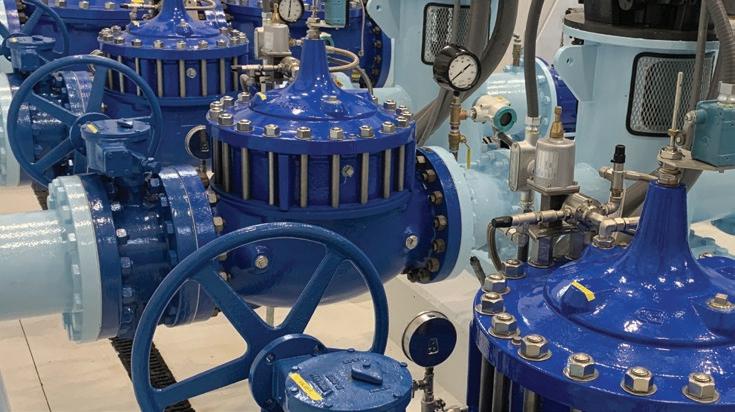






Paniz Miesen, Environmental Scientist, CDM Smith, Chair, RMSAWWA IIJA Task Force and Annie Huang, Project Engineer, HDR, Member, RMSAWWA IIJA Task Force
In 2021, the Infrastructure Investment and Jobs Act (IIJA) was passed into law, carrying with it more than $100 billion in water and wastewater infrastructure-related funding between 2022 and 2026 to address growing challenges. New funds became available to tackle lead service lines and emerging contaminants, and opportunities were expanded to address increasing water supply shortages and aging infrastructure needs. Cybersecurity and resilience programs were developed to specifically help utilities and municipalities address new problems they had not faced before. Funds were funneled through a range of agencies, with a portion dedicated to smaller rural communities or those in disadvantaged areas where resources are needed most.
In the Rocky Mountain region, nearly $500 million in IIJA funds have been appropriated to support critical water and wastewater improvements using 2022 through 2024 appropriations.
The RMSAWWA IIJA Task Force interviewed nine utilities across the region to weigh in on their experience with the IIJA and the impact federal funds have had on their communities.
The funding process helped change perspectives around water and sewer rates, but also highlighted the increasing need for external funding support for smaller communities with a low revenue base. Many smaller towns and utilities located in the mountains lack the revenue base to support major infrastructure improvements. The process of pursuing funding helped the Town of Fairplay’s Board better understand infrastructure needs and initiated a change in thinking around rates. The Town continues to pursue funding where necessary and adjust rate structures to assist with infrastructure financing. Similarly, the Town of Yampa, CO, reviewed its system and
financials to better understand feasible funding approaches that address capital improvement needs. As a result, the Town doubled its sales tax rate, increased its rates, and conducted a rate study in 2023 to review operations and long-term reserve funds. With this groundwork, the Town was able to confidently pursue external funding and has seen returns a hundredfold.
Pagosa Area Water and Sanitation District’s (PAWSD) service area supports a small permanent service area and various vacation communities. In the summer, water demand increases threefold. PAWSD received SRF funding for improvements to its treatment plant. When relying on past PAWSD staff experience and external support from SRF staff and other consultants, PAWSD learned the process and navigated federal funding requirements associated with SRF funds. Once the process became familiar, the PAWSD was confident in anticipating the steps throughout the process.
Similarly, Crested Butte, CO, serves 1,700 permanent residents and over twice as many second homeowners. With a small customer base, tourism is what drives much of Crested Butte’s demands. In 2024, the Town completed infrastructure upgrades through an SRF loan, a DOLA grant, and a Green Project Reserve reduced interest rate loan. These funds enabled the Town to build critical infrastructure amidst increasing prices and limited revenues. However, there is still a large gap in what needs to be done. Hard choices with budgeting will determine project timelines, especially if federal funding opportunities are diminished. To support tourism in Colorado, towns like Crested Butte need more external funding to bolster aging infrastructure and maintain services that both residents and tourists rely on.


Without continued IIJA and federal funding, important capital improvements that impact public health and system reliability would be delayed, and rates would increase.
The Los Alamos County DPU in New Mexico has leveraged state and federal funding opportunities to support capital improvements for both water and wastewater systems. Even so, rates have increased by 60% over the past 10 years, but without IIJA funding, those increases would have been higher. Staggering inflation and supply chain fluctuations since the COVID-19 pandemic introduced unanticipated challenges and setbacks related to project implementation, but the IIJA and local grant programs helped to reduce some of those impacts on DPU and the communities it serves. Although DPU acknowledged there is a learning curve when it comes to applying for federal funding, the benefits far outweigh the hassles. In the long run, the IIJA funds enabled DPU to continually provide top-notch services to its customers at more reasonable rates.
South Adams County Water and Sanitation District (SACWSD) was awarded IIJA funding to construct a new water treatment plant to remove per- and polyfluoroalkyl substances (PFAS) from its water supply. The District leveraged a diverse portfolio of funding sources and grants to support project implementation, and if it were not for this funding, SACWSD would have had to borrow $80 million in loans to complete the project. SACWSD serves a disadvantaged community in Commerce City, CO, and an $80 million loan would have been drastic for SACWSD and their customers. The SACWSD attributes much of their success to connecting and communicating early and often with state and federal funding administrators and decision makers to express the importance of needed capital investments.
The City of Greeley, CO, acquired IIJA Lead Service Line Replacement (LSLR) funds through SRF, with nearly half of the loan granted as principal forgiveness. This has benefited the community by expediting the removal of lead pipelines while also minimizing impacts on ratepayers. The IIJA funding also helped fast-track the Lead Reduction Program for Denver Water and save on overall long-term costs of the program, keeping rates more affordable for customers. Denver Water initially lacked the necessary policies and procedures to support required reporting and compliance components for federal funding. To address this, Denver Water conducted a full compliance review with its external audit firm before accepting the funds and implemented necessary changes.
Although federal funding has been tremendously beneficial to the City of Greeley and Denver Water’s lead replacement programs, regulatory requirements have been burdensome. Some of the requirements under the National Environmental Policy Act (NEPA) and National Historic Preservation Act (NHPA) are not compatible with LSLR projects that have frequently shifting project areas. Streamlining these processes for LSLR projects in particular would be beneficial to communities and help to improve project efficiency.
The federal funding landscape has shifted considerably, and the future IIJA appropriations are still set to expire in 2026. Although it will take time to see how federal legislative investments for water infrastructure will be impacted in the future, what’s clear is that the need for funding is still present and growing. With aging infrastructure approaching the end of its useful life, increasing demands for residential, seasonal, industrial and technological growth, new or upcoming regulatory requirements, and everchanging weather extremes and water quality challenges, the next decade will bring hard truths and larger costs.
If federal resources are reduced, the existing funding gaps will increase, and alternative approaches to funding these necessary improvements must be explored. States and local government grant or loan programs can help provide supplemental funding, and leveraging partnerships to pool resources and accomplish shared goals may become more common. But regardless of approach, the upcoming trends in water infrastructure improvement needs will also require creative updates to potential

Paniz Miesen has worked in the water industry for nearly 20 years in academia, public, and private sector roles. She supports local governments and utilities on water quality, source water protection, compliance, and risk management projects across the country and has been passionate about connecting important projects to the right funding opportunities since passing of the IIJA.

Annie Huang provides planning and design support for a wide range of water and wastewater projects at HDR and has been an active member of the IIJA Task Force since 2023. She is involved in the development of federal and state funding strategies and funding application preparation for communities of all sizes. Annie also supports planning for capital improvement projects for distribution and collection systems and is involved in water and wastewater infrastructure process design.









All wastewater treatment plants are not alike. That’s why plant designers prefer our Raptor® line of screening products, the innovative all-in-one units that screen, wash, convey and dewater screenings efficiently, capturing more fine solids and long fibers than other available screens. Raptor® products are adaptable to a wide range of configurations, giving you more choices for better performance in your unique application. They are preferred among plant operators for their simple operation, ease of use, and minimal maintenance. When performance counts, count on the industry leader for more than 90 years—Lakeside Equipment Corporation.
REPRESENTED LOCALLY BY:




Speak to one of our experts at 630.837.5640, email us at sales@lakeside-equipment.com or visit lakeside-equipment.com for more product information.

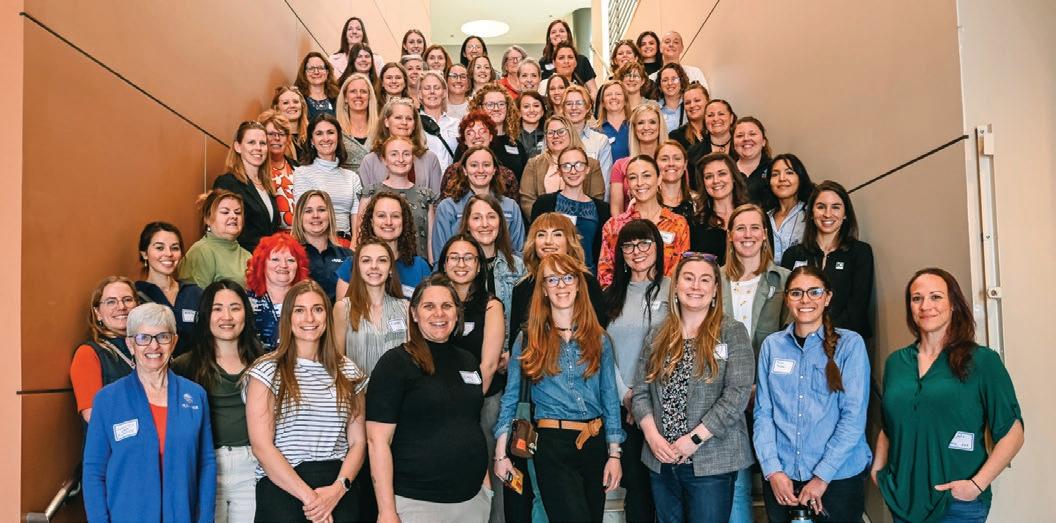
Kacie Allard, Deputy Director – Business Solutions, South Platte Renew
On Wednesday, March 26, I had the profound honor of co-coordinating the RMWEA Women in Water event alongside my colleague, Jamie Safulko. As I reflect on the experience, I feel an overwhelming sense of pride, not only in helping bring the event to life but in the incredible energy, insight, and solidarity that filled the room. It was one of the most meaningful moments of my career.
So often, in professional spaces, especially in male-dominated industries, there’s an unspoken pressure for women to compete with each other. But the truth is: empowered women empower women. And when we come together to lift each other, share our stories, and create space for others, we’re doing far more than networking; we’re shaping the future of this industry for the better.
The event brought together over 70 women from across the water sector, representing utilities, consulting firms, vendors, and construction companies. Our shared goals?
To learn, to grow, and to build a stronger, more supportive community of women in water.
We kicked off the event with lunch and a round of trivia that blended the celebration of female accomplishments with unsettling facts. While we laughed and connected over fun facts, we also grounded ourselves in the reality of why gatherings like this matter. Consider these statistics:
• Globally, women hold just 20% of leadership roles in water utilities. In the US, that number drops even further to only 15%.
• At the current rate of progress, it will take 50 years for women’s representation in senior leadership to match their share of the US population. For white women, that milestone could come in 22 years, but for
women of color, it would take more than twice as long.
• Yet, there’s hope in connection: Women with strong female networks are two-and-a-half times more likely to reach leadership positions.
These statistics aren’t just numbers; they’re a call to action, and the women in that room were ready to rise to the challenge.
We were fortunate to hear from keynote speaker Nicole Poncelet-Johnson, Executive Director of One Water at the City of Fort Collins. Nicole graciously shared her journey through the water industry, offering valuable insight into the challenges she’s faced and the triumphs she’s earned. Her authenticity and willingness to be vulnerable were incredibly powerful. For me personally, her words reinforced the importance of making intentional career choices and the transformative impact of expanding our professional networks.

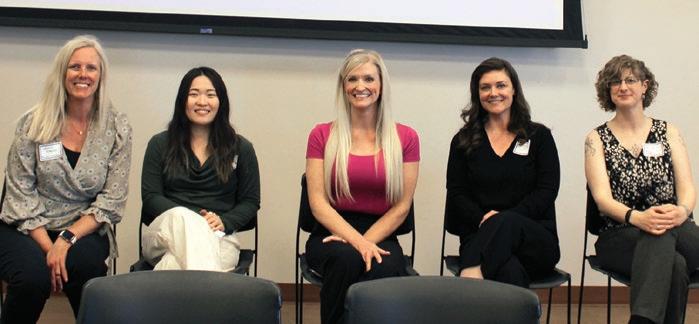
Ensuring delivery and quality of drinking water is a serious responsibility that requires the navigation of multiple challenges, including aging infrastructure, the impacts of climate change, and emerging contaminants.
With over a century of engineering experience, our experts offer a trusted, adaptive approach to address water management issues proactively and provide solutions that bolster resilience in the face of uncertainty and change.
From Wyoming to New Mexico, we are committed to your success in protecting the Rocky Mountain region’s most precious resource.

Following Nicole’s address, we hosted a panel discussion featuring a dynamic and diverse group of women:
• Sarah Reeves, Vice President at Brown and Caldwell.
• Feng Xiang, Water Resource Recovery Engineer at Jacobs.
• Bennett Parsons, Account Manager at The Water Research Foundation.
• Lindie Aragon, Chemist at the City of Westminster.
• Kim Cowan, Director of Operations & Maintenance, Northern Treatment Plant at Metro Water Recovery.
The panel was nothing short of inspiring. Each woman brought unique insights, personal stories, and a genuine desire to engage. The conversation was honest, vulnerable, and rich with wisdom. What stood out to me most was the response from the audience, the thoughtful questions, the shared stories, and the deep curiosity to learn from one another’s experiences. It was a beautiful reminder that we grow stronger by listening, sharing, and lifting each other up.
To close out the day, we transitioned into small roundtable discussions. These conversations focused on actionable solutions: How can we better support each other? How do we encourage and cultivate more womenled initiatives in the water industry? How do we make water-related careers more visible and appealing to younger women and girls? How do we shape future Women in Water programming to keep this momentum going?
What emerged from these discussions was a collective desire to do more, be bold, mentor, advocate, and create meaningful change. It reminded us that our voices, experiences, and leadership matter. And when we come together, the impact is powerful and lasting.
As I looked around the room that day, I felt truly honored to be among such passionate, driven, and courageous women. Events like this don’t just happen, they’re built with intention, care, and a deep belief in the value of community. I’m so proud to have played a role in bringing this vision to life.
And we’re not stopping here. We’re excited to carry this energy forward to the Rocky Mountain Water Conference, where we’ll
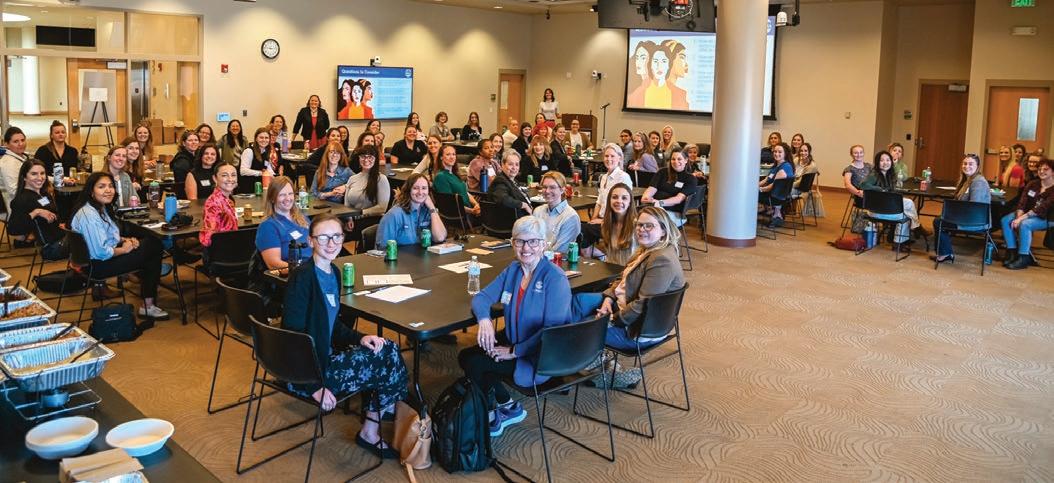
be hosting a special session dedicated to Women in Water. This upcoming session will continue the conversations we started, diving deeper into leadership, inclusion, and how we can pave the way for the next generation of women in this field.
Stay tuned for more details. We can’t wait to continue this journey with you. Because when women support women, we don’t just change the room, we change the entire industry.

Kacie Allard is the Deputy Director – Business Solutions for South Platte Renew, Colorado’s third-largest wastewater treatment plant. She has 18 years of experience in municipal government, 11 of which have been in the water sector. Kacie is an expert communicator, change leader, novice gardener, and devoted wife and mother. She landed in the water sector by happenstance but has become passionate about serving the community and its stakeholders since then. Her enthusiasm for collaboration and team empowerment has allowed her to grow and encourage others in their personal and professional development.
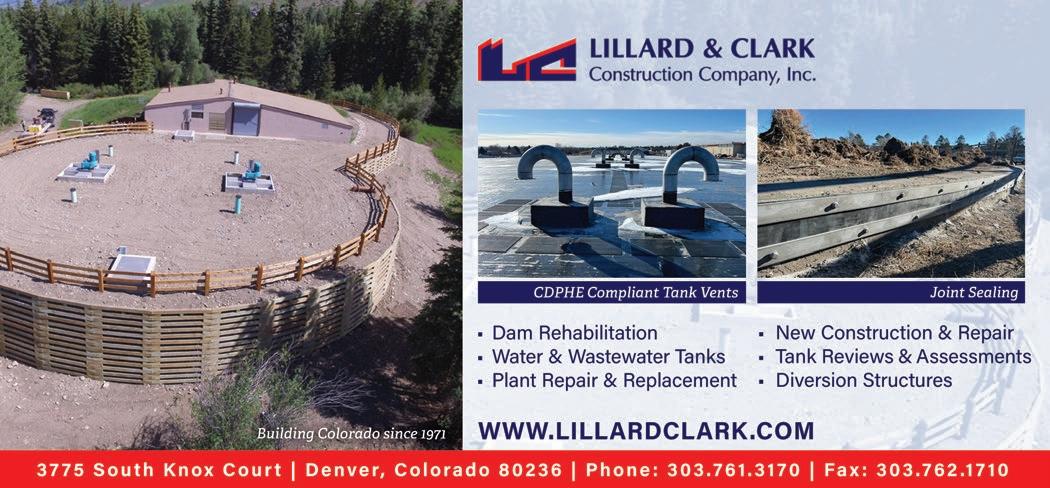













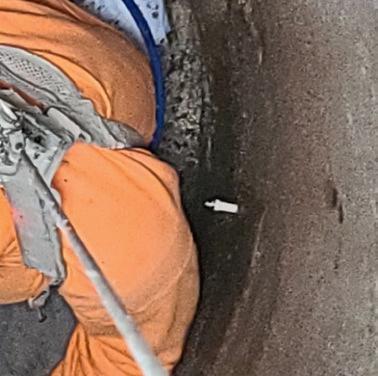


Sonar






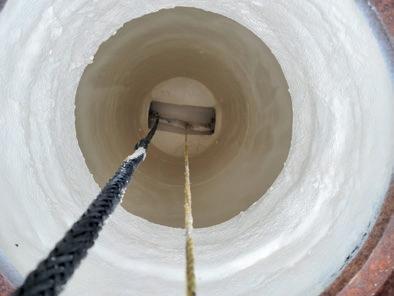


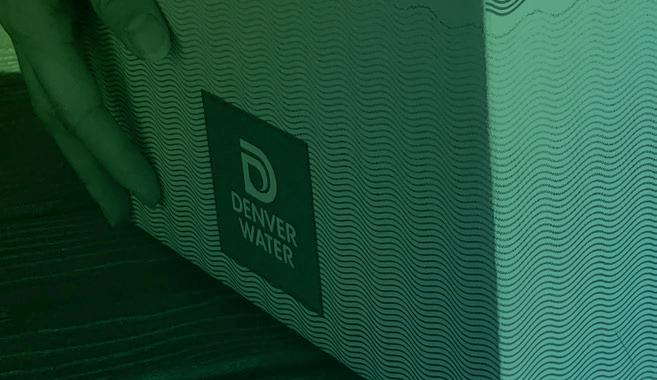
Alexis Woodrow, Lead Reduction Program Manager, Denver Water and Cathy Proctor, Communication Specialist, Denver Water
Lessons learned from the LRP
In fall 2024, when the Environmental Protection Agency’s Lead and Copper Rule received its first major update in three decades, Denver Water had already been working for over 10 years to identify the material of the more than 300,000 customer-owned water service lines in its service area.
The utility, Colorado’s oldest and largest water provider serving 1.5 million people in Denver and surrounding suburbs, is now in its sixth year of its Lead Reduction Program, which started in 2020 and will replace the estimated 64,000 old, customer-owned lead service lines in its service area.
These are some of the lessons learned from Denver Water’s Lead Replacement Program.
The water Denver Water delivers is lead-free, but lead can get into the water from the service line or internal plumbing. Replacing these lines requires customers’ trust, communication with internal and



Since it launched in January 2020, Denver Water’s Lead Reduction Program has distributed more than 150,000 pitchers and nearly 1 million filters certified to remove lead from drinking water to customers in the program. Photo credit: Denver Water.
external stakeholders, paying attention to training and documentation, and creating a program that can adjust as needed to improve the public health of our communities.
The utility has learned what it takes to have customers open their doors, to work inside their homes and on their property; customers care about these things, but it can be done, and it’s worth it. The work you do will directly impact your customers’ trust in you.
A 2023 survey found Denver Water customers in the utility’s Lead Reduction Program had higher satisfaction with the
utility’s performance than customers who did not work as closely with the utility.
In October 2024, two major updates to the 1992 Lead and Copper rule occurred: the implementation of the Lead and Copper Rule Revisions, known as the LCRR regulations, and the finalization of the Lead and Copper Rule Improvements , or LCRI.
Denver Water’s Lead Reduction Program mirrors aspects of the LCRR and the upcoming LCRI regulations that will take effect nationwide in 2027.

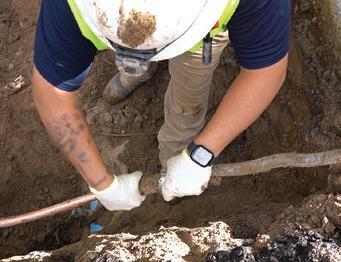
Denver Water’s Lead Reduction Program will replace an estimated 64,000 old, customerowned lead service lines with a new, lead-free copper line at no direct cost to the customer.

Denver Water’s Lead Reduction Program will replace the estimated 64,000 old, customer-owned lead service lines in its service area at no direct cost to the customer.

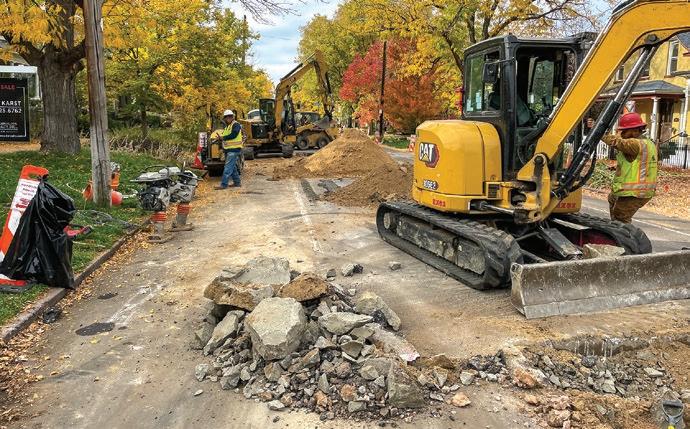
Water’s Lead Reduction Program gives advance notification to people living on streets where lead service line replacement work will take place.

Denver Water recently passed the halfway point for its Lead Reduction Program, replacing more than 32,000 of the estimated 64,000 old, customer-owned lead service lines in its service area at no direct cost to the customer.
Photo credit: Denver Water.

Denver Water provides water filters and pitchers to customers in its Lead Reduction Program to use for cooking, drinking and preparing infant formula until six months after the customer-owned lead service line is replaced at no direct cost to the customer.
Photo credit: Denver Water.
• Denver Water maintains a public inventory (See it at denverwater.org/Lead.) of the estimated 64,000 lead service lines in its service area.
• Customers are notified that lead (or galvanized steel) has been found in their service line and are placed in the program.
• Nearly 5,000 are being replaced with a lead-free copper line every year.
• Customers in the program receive filters certified to remove lead from drinking water until six months after their line is replaced.

• An extensive communication and education program supports the program.
Water providers should spend time reviewing their operations and the new regulations before they take effect.
That means looking at how existing corrosion control treatments may affect lead levels and reviewing how much the utility knows about the material of service lines in their service area. The scope and size of a program will be affected by the number of “unknown material” lines, as investigating lines to put them into the lead or non-lead category takes time, effort, communication and budget.
Denver Water has used a mix of sources to pay for the Lead Reduction Program, including funds from customer rates, bonds, grants and a federal loan, part of which was forgiven.
For replacement work, Denver Water uses a combination of utility crews (when lead service lines are encountered as part of regular maintenance work) and outside contractors.
And, as Denver Water was setting up the program, one of the first steps was to review the work involved in replacing a service line and attaching the new line to both the utility’s delivery line and the customer’s interior plumbing.
Licensed plumbers are needed, as they have the skills to connect a new service line to the interior plumbing. On the other

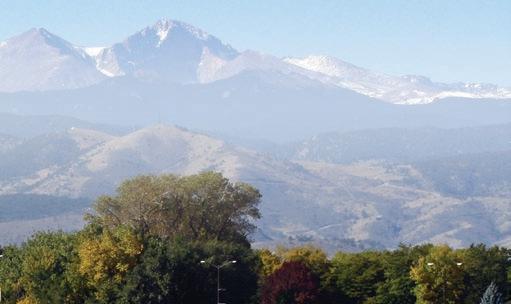






Small water and wastewater utilities in Colorado serving rural communities, small towns, or tribal regions face a critical challenge: ensuring compliance with complex federal and state regulations while operating with limited budgets, staff, and technical expertise. These utilities, typically serving fewer than 3,300 people, lack the resources of larger systems, which can afford dedicated compliance teams or consultants. Yet, water and wastewater regulations continue to become more stringent.
Compounding these challenges is the issue of aging infrastructure. Many small utilities are responsible for maintaining extensive networks of pipes, pumps, and treatment systems, assets that are not only aging but also vital to the health and resilience of their communities.
How can small utilities in Colorado access the information they need to meet these standards? This article explores practical strategies to help small systems stay compliant despite resource constraints.
The Compliance Challenge in Colorado Regulatory compliance is a high-stakes endeavor. Non-compliance risks fines, legal action, or public health issues, but keeping up is daunting for small utilities. A single operator may juggle roles as manager, technician, and record-keeper, leaving little time to interpret updates from the Colorado Department of Public Health and Environment (CDPHE). Budgets rarely cover specialized training or compliance software. Colorado’s regulatory landscape is complex and ever changing; from the state’s PFAS Action plan, to the Water Quality Roadmap addressing multiple pollutants, to state inspections, to contaminants of emerging concern, all utilities face an uphill battle. Here are some tips to help stay abreast of the changing regulatory climate in Colorado.
STRATEGY 1:
Engage with Colorado-Specific Regulatory Groups and Conferences
The Colorado Water Utility Council, sponsored by the Rocky Mountain Section
of American Water Works Association (RMSAWWA), is a great way for small water utilities to learn about hot topics in the regulatory world. Typically, at least one CDPHE representative from Colorado’s Safe Drinking Water Program is there to provide updates and answer any questions members may have. The Council meets virtually on the first Friday of each month. For more information, visit the RMSAWWA website at rmsawwa.org/page/CWUC.
The Colorado Wastewater Utility Council (CWWUC), similarly, meets virtually on the second Wednesday of the month. This group of wastewater utilities work collaboratively with state and federal regulators to ensure the protection of human health, water quality and the environment, and to ensure our ratepayers can afford our services. At least one CDPHE representative from Colorado’s Clean Water Program is there to provide updates and answer any questions members may have. One of the Council’s objectives is to support small utilities that are in need of assistance. For more information on CWWUC, visit cwwuc.org.

The Rocky Mountain Water Conference, co-hosted by RMSAWWA and the Rocky Mountain Water Environment Association (RMWEA), is a great local event where small utilities can network with peers and regulators while also learning from technical sessions and presentations. These types of conferences can be helpful for small utilities to gain practical compliance knowledge at a lower cost than national conferences like the American Water Works Association (AWWA) Conference and Exposition (ACE), Water Environment Federation (WEF) Technical Exhibition and Conference (WEFTEC), WateReuse Symposium, or National Association of Clean Water Agencies (NACWA) conferences.
The WateReuse Colorado Annual Conference offers sessions on reuse regulations, including Regulation 84 for the use of reclaimed water and Regulation 11 for direct potable reuse. While larger utilities like Denver Water, Aurora Water, and Colorado Springs Utilities have a number of individuals in attendance, small systems can benefit from learning about implementation hurdles and regulatory processes from both these larger utilities as well as other small utilities.
A 2025 session on “Reuse for Small Communities” provided targeted insights, and WateReuse Colorado plans a Four Corners conference in 2026 with Colorado, Arizona, New Mexico, and potentially Utah, offering a regional perspective. WateReuse Colorado meets every other month and also has at least one representative from CDPHE present to provide any updates on reuse regulations. For more information on WateReuse Colorado, visit watereuse.org/ sections/watereuse-colorado.
The good news is that by attending these local meetings or conferences, a small utility will learn about the latest events in the Colorado regulatory climate. A small utility can sign up for notifications for regulatory updates and meetings through Colorado’s Water Quality Control Division’s website at cdphe.colorado.gov/wqcd-subscription-form Also, the Water Quality Control Division offers an engagement calendar posting possible engagement opportunities for updates to regulation, guidance and policies. Please check out the calendar online at cdphe. colorado.gov/water-quality-engagement.
Access Free Online Compliance Tools
Free online resources are vital for small utilities. CDPHE has a local assistance unit which offers a variety of free coaching and training tools for water and wastewater utilities. A utility can even request free, one-on-one coaching at your facility to meet your specific needs. For more information on these opportunities, visit cdphe.colorado.gov/dwtrain.
In addition to CDPHE, several other organizations provide free or low-cost technical assistance and training specifically designed for small systems. The Colorado Rural Water Association (CRWA) offers on-site technical support, training, and resources tailored to rural and small utilities. The Rural Community Assistance Corporation (RCAC) provides hands-on help with compliance, operations, and financial planning. The Environmental Finance Center Network (EFCN) delivers webinars, tools, and direct assistance to help small systems build capacity and navigate regulatory requirements. These organizations are invaluable partners in helping small utilities stay compliant and sustainable.
In the event of a utility emergency, Colorado’s Water/Wastewater Agency Response Network (CoWARN) is a statewide network of “utilities helping utilities” to prepare for and respond to natural or human-caused emergencies. For example, if a small wastewater utility is unable to meet its Colorado Discharge Permit System (CDPS) effluent limitations, that utility can access CoWarn for assistance. Response from large or neighboring utilities is typically very timely, offering compliance help or troubleshooting treatment equipment. Although every situation is different, CoWARN may provide valuable assistance, especially to a small utility, in a time of dire need. For more information, visit cowarn.org.
Build Local Partnerships
Regional cooperatives allow small utilities to share compliance expertise, such as hiring a shared compliance officer. Local universities, like Colorado State University’s Rural Water Initiative, connect utilities with students for
tasks like data reporting, while the University of Colorado Boulder’s Environmental Engineering Program offers technical support for wastewater permit applications.
Moving Forward
Regulatory compliance is non-negotiable, but Colorado’s small utilities have support. By engaging with the Colorado Water Utility Council, the Colorado Wastewater Utility Council, WateReuse Colorado’s meetings and conferences, Colorado networks, online tools, and local partnerships, utilities are set up to succeed. Start small: look at CDPHE’s online tools, attend a utility council meeting or a local conference. As regulations evolve, with PFAS, nutrient criteria, and DPR advancing, small utilities must stay proactive. In addition to regulatory pressures, the burden of maintaining aging infrastructure, often with limited staff and funding, adds another layer of complexity. These systems are the backbone of reliable service and represent highly valuable assets in the communities they serve. Local conferences and accessible resources ensure that limited budgets are no barrier to compliance or long-term sustainability.

Julie Tinetti is the Regulatory Compliance Manager at Highlands Ranch Water, where she has served for more than a decade. She is passionate about crafting regulatory solutions that balance water quality with the needs of ratepayers, ensuring compliance is both effective and community-focused. Julie has held leadership positions on the Colorado Wastewater Utility Council for the past nine years and currently serves as Vice Chair of the Colorado Water Utility Council, where she helps shape statewide policy and advocacy efforts. Outside of work, she loves spending time outdoors with her family and tackling ambitious home improvement projects with her husband.
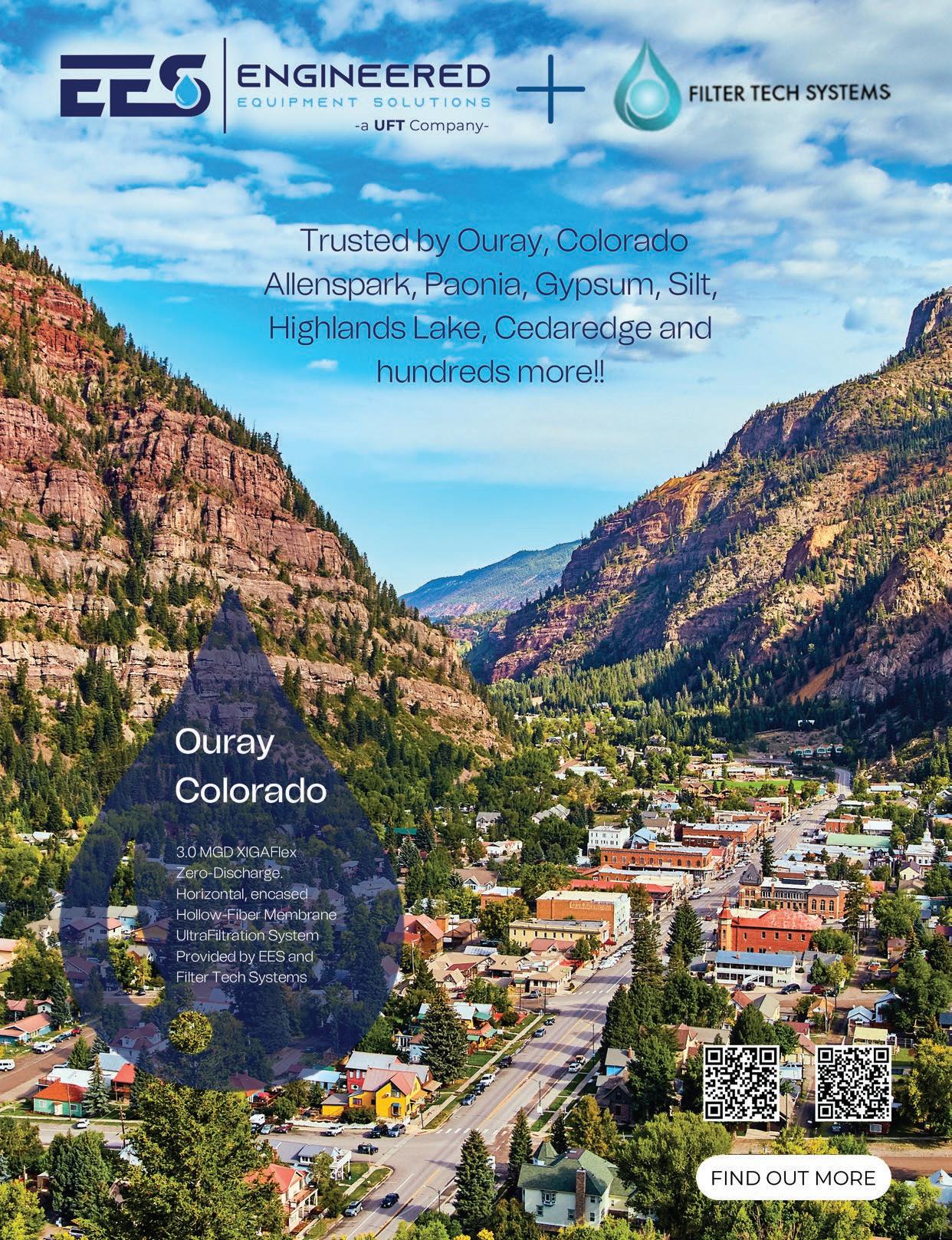


Meghan
Each year, according to US Environmental Protection Agency (EPA) estimates, approximately 60% of biosolids generated from domestic wastewater facilities are land applied for agricultural, reclamation, and other uses. Land application can increase crop yields and recycle biosolids that may otherwise end up in landfills. Biosolids must meet strict standards, with maximum metal concentrations and prescribed application rates. In many ways, biosolids land application is a win-win-win for domestic wastewater utilities, farmers, and the environment.
In recent years, biosolids have come under increased scrutiny because they have been found to contain per- and polyfluoroalkyl substances, or PFAS. Often referred to as “forever chemicals,” PFAS are a class of humanmade compounds originally developed in the 1940s. While their water-, stain-, and oil-resistant qualities provide benefits, they are persistent in the environment and may have human health impacts, such as increased risk of some cancers, reproductive effects, immune deficiencies, and higher cholesterol levels. PFAS are used in many everyday products, including fire-fighting foam (although that use is being phased out), cleaning solutions, ski wax, raingear, and food packaging. Because it has been used so widely and doesn’t degrade over time, PFAS ends up in our drinking water sources, in storm sewer systems and waterbodies, and biosolids and wastewater effluent.
In 2024, the EPA designated two PFAS compounds, PFOS and PFOA, as hazardous under the Comprehensive Environmental Response, Compensation, and Liability Act (CERCLA or “Superfund”). This classification
allows EPA to designate and require clean-up of sites contaminated with these compounds. CERCLA was designed on the “polluter pays” principle to clean up hazardous waste sites. Many of the approximately 1,800 Superfund sites in the United States were contaminated by chemical manufacturers, improperly designed landfills, or mining sites prior to the passing of environmental laws such as the Clean Water Act. Think unlined waste lagoons at manufacturing plants and leaky drums containing toxic waste lined up near waterways. Under CERCLA, the companies that caused the pollution are responsible for paying for the clean-up.
Unlike companies that manufacture PFAS or use these compounds to make other products, drinking water and domestic wastewater utilities are passive receivers of PFAS. It comes into treatment systems from many sources and then exits in the form of drinking water residuals, treated effluent, and biosolids, including some that have been applied across vast swaths of land. If EPA were to identify water utilities as liable for PFAS clean-up, or if utilities were pulled into third-party lawsuits, PFAS clean-up could come at the expense of the general public through increased utility rates, rather than at the expense of PFAS producers.
The Water Environment Federation (WEF) and other water organizations have been advocating for a CERCLA liability exemption for water and wastewater facilities for several years. These efforts are gaining traction. Under the Biden Administration, EPA issued a policy memo indicating that EPA did not intend to pursue enforcement for community water systems, public wastewater treatment works, or municipal storm sewer systems. While the
memo was a positive signal, without an act of Congress, the memo does not protect water utilities from third-party lawsuits and could be changed in future administrations.
In 2023, US Senator Cynthia Lummis (R-WY) introduced a bill (S. 1430) to put a CERCLA exemption for water systems into law. Without bipartisan support, that bill did not pass. In February 2025, Rep. Marie Gluesenkamp Perez (D-WA) introduced a similar bill (H.R. 1267) that, as of the time of this writing, had six Democrat and six Republican cosponsors. In May 2025, EPA Administrator Lee Zeldin announced a suite of PFAS actions, including an intention to work with Congress to protect passive receivers from PFAS liability.
Exempting water and wastewater utilities from CERCLA liability would protect the utilities and the public from costly clean-up efforts, ensure polluters are held responsible, and support utilities in continuing to advance efforts to remove PFAS from drinking water, wastewater effluent, and biosolids.
Want to advocate for better PFAS laws and other water issues? Check out the Water Environment Federation’s Water Advocates Program (www.wef.org/water-advocates), which tracks relevant legislation for you and provides easy tools to help you reach out to your Members of Congress.
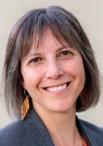
Meghan Wilson Outcalt is the Water Quality Senior Manager at the City of Boulder and the Vice Chair of the RMWEA Government Affairs Committee.





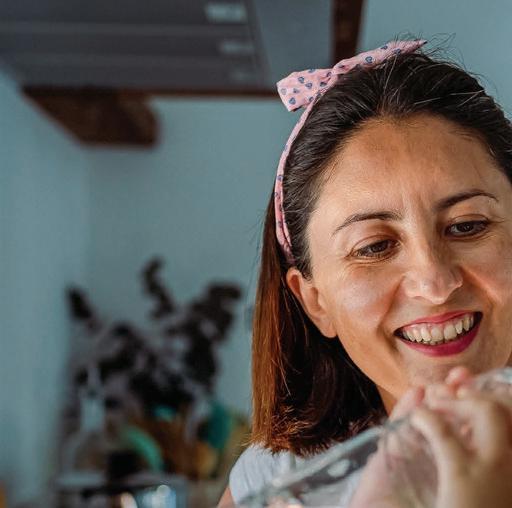

Most see a water tower.
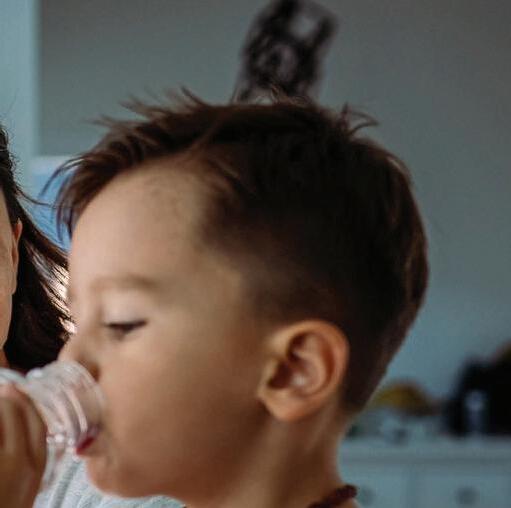

We see a thirst-quenching drink.







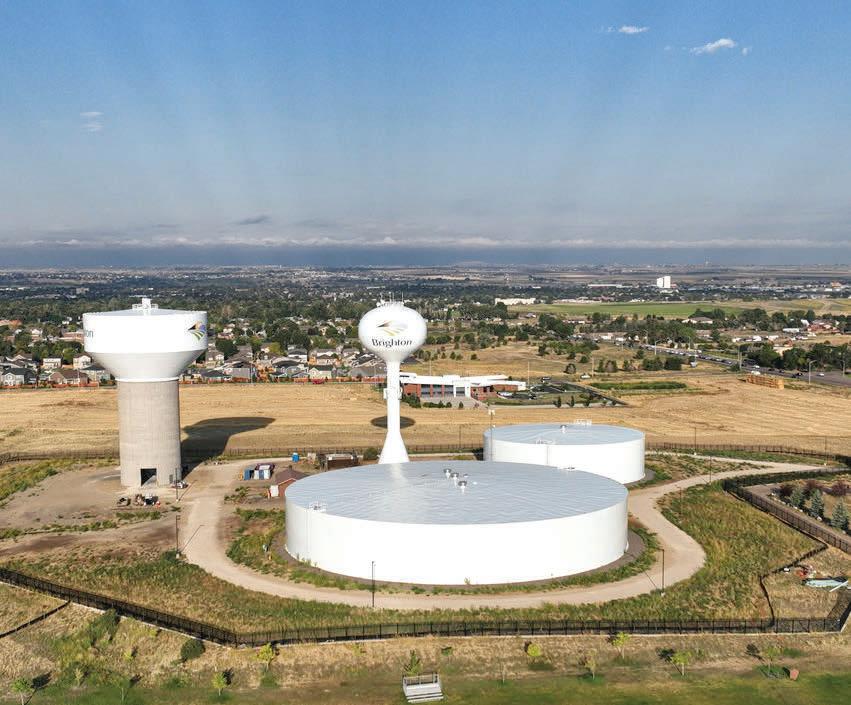
Lauren Riedle, Lead Engineer, Carollo Engineers, Liam Cavanaugh, Chief Operating Officer and Deputy CEO, Metro Water Recovery, and John Rehring, Vice President and Senior Client Service Manager, Carollo Engineers
Metro Water Recovery collaborated with Denver Water and Aurora Water to foster dialogue on salinity in the Denver urban portion of the South Platte watershed. The South Platte Salinity Stakeholder Group (https://watercenter.colostate.edu/ water-quality-and-access/south-platte-salinity-stakeholders/) has been discussing the concerns and needs of stakeholders across the entire South Platte Basin and informing/coordinating ongoing salinity research efforts since 2020.
The Regional Salinity Summit (Summit) was held early this year and brought together 75 attendees from diverse stakeholder groups to explore Colorado-specific issues. They discussed lessons learned from Southern California, California’s Central Valley, and El Paso, Texas. The goal was to begin identifying solutions for addressing salinity challenges moving forward.
Water resource recovery facilities (WRRFs) are responsible for removing an ever-lengthening list of contaminants in wastewater: nitrogen, phosphorus, arsenic, cadmium, selenium, thermal energy (temperature), and potentially PFAS. Salinity and its components – commonly referred to as salts – are yet another constituent that may need to be removed from the effluent’s clean water.
Salinity can impact drinking water aesthetics, corrode infrastructure, affect aquatic life, and impact some irrigation uses. It can also make water more difficult and expensive to treat for drinking or reuse. Like many western rivers, salinity increases in the South Platte River from upstream to downstream. In 2018, average TDS concentrations in the South Platte River ranged from less than 200 mg/L in the headwaters upstream of Denver to over 700 mg/L in the Denver area and 1,300 mg/L near the Colorado-Nebraska state line (NEIRBO Hydrogeology and Colorado Corn, 2018).
The Colorado Department of Public Health and Environment (CDPHE) has set stream water quality standards for two key salinity constituents: chloride and sulfate. According to Regulation 31: The Basic Standards and Methodologies for Surface Water, the Table Value Standards for chloride and dissolved sulfate in a surface water body used as a domestic water supply are each 250 mg/L (chronic). Chloride and sulfate effluent limits, derived from these stream standards, are being added to Colorado Discharge Permit System permit renewals for some Colorado Front Range WRRFs.
In many areas in greater Denver, background concentrations of chloride and sulfate in streams and rivers already approach or exceed the CDPHE water quality standards, leaving little or no assimilative capacity in receiving waters for salinity from wastewater discharges.

Salinity, commonly measured as total dissolved solids (TDS), refers to the total concentration of dissolved salt ions in a solution. Salinity in water can come from natural or anthropogenic sources. Additionally, salts can be concentrated in a water body naturally (when evaporation exceeds precipitation) or through water reuse (when salts accumulate after each use).

• Wastewater facility effluent
• Residential water softeners
• Industrial operations
• Rock and sediments
• Irrigated agriculture
• Livestock
• Oil and gas operations
• Roadway deicing agents
• Stormwater runoff

With increasing salinity loading discharged to their collection systems and the potential need to meet chloride and sulfate limits at facilities that are not equipped to remove these constituents,


Water & Wastewater Electrical Specialists Our Expertise:


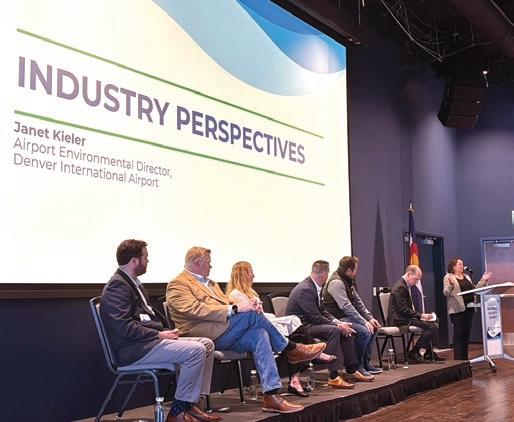
• “Salinity is nobody’s problem and everybody’s problem.”
Elevated salinity is caused by numerous factors. Therefore, salinity challenges cannot be solved by a single entity.
• “Invite everyone to the table and build trust.”
Coalitions bring diverse stakeholders together to understand the science, tradeoffs, and costs, and make collective decisions on how to tackle critical water quality issues.
• “Reassess our tolerance.”
As we consider how to manage salinity, we should reexamine the levels of salinity our residents and businesses, crops, and aquatic ecosystems can take.
• “As a wastewater treatment utility, we treat whatever comes in the front door – maybe we should start thinking about why something is coming in the door.”
It is important to understand the sources of salinity in our region to address the factors contributing to the problem.
• “Concentrate on the concentrate.”
The production of brine by reverse osmosis treatment systems raises the question of “what to do with all that concentrate?”
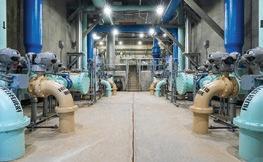




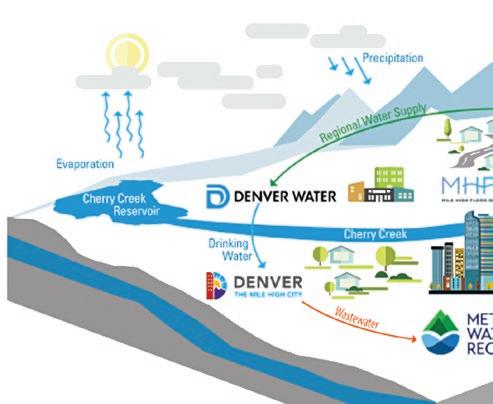
Coalitions, such as the Regional Salinity Summit and Denver One Water Leaders, have been instrumental in tackling regional and multi-faceted water issues among Colorado Front Range utilities and stakeholders.

WRRFs may be put in a difficult position. This leaves two primary –and unattractive – paths: implement pretreatment limits on industrial dischargers, bringing potential economic development concerns, or implement costly end-of-pipe treatment to remove chloride and sulfate.
Removing salinity from wastewater requires advanced technology such as reverse osmosis (RO), ion exchange, or evolving processes like Ion Exchange Based Advanced Treatment (XBAT) –all of which are expensive and come with unique challenges. Disposal of RO concentrate (brine) is particularly challenging in Colorado, where ocean discharge is inaccessible and deep well injection is restricted. Some Front Range utilities facing effluent salinity limits have found the required technological investment to be cost-prohibitive, prompting consideration of potable reuse and other strategies to reduce or eliminate discharges.
The Summit took place on February 19 at the CSU Spur Campus in Denver. Presentations to frame the issue were given by representatives of the Colorado Water Center at Colorado State University, CDPHE, Metro Water Recovery, Mile High Flood District, Aurora Water, Metro Denver Economic Development, and Denver International Airport. External perspectives were presented by the Santa Ana Watershed Project Authority, Los Angeles County Sanitation Districts, El Paso Water Utilities, and Central Valley SALTS, shedding light on strategies other western utilities have employed to address increasing salinity levels in their regions.
Drawing on the key findings of the Summit, Metro Water Recovery and its partners are developing a regional path forward on salinity issues that include:
1. Understanding the locations and types of salinity sources in the South Platte River watershed.
2. Convening a policy subgroup of the existing South Platte Salinity Stakeholder Group to facilitate state and local policy discussions with a broad stakeholder group.
3. Developing collaborative regional strategies to address salinity in the long term.
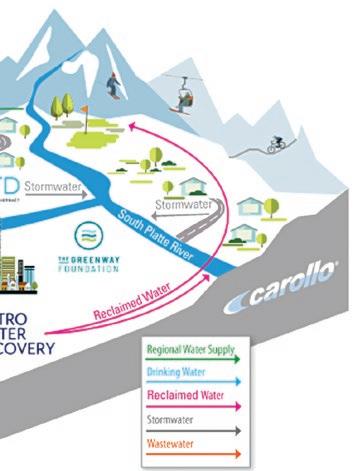
The policy subgroup will discuss state-level policy needs and potential policy solutions, bolster Denver Metro-area representation in the South Platte Salinity Stakeholder Group, and coordinate with the stakeholder group on next steps to characterize salinity sources in the South Platte River watershed.
If members of your organization would like more information on the policy subgroup or the South Platte Salinity Stakeholder Group, please contact Liam Cavanaugh, Deputy CEO/Chief Operating Officer at Metro Water Recovery at lcavanaugh@metrowaterrecovery.com, or Karen Schlatter, Director of the Colorado Water Center at karen.schlatter@colostate.edu, respectively.


Lauren Riedle is a Lead Engineer at Carollo, specializing in wastewater treatment planning and design. She has nine years of consulting experience and is a licensed Professional Engineer. Lauren can be contacted at lriedle@carollo.com.
Liam Cavanaugh is the Chief Operating Officer and Deputy CEO for Metro Water Recovery, overseeing the Operations, Maintenance, and Resource Recovery and Reuse functions for an organization serving a population of 2.2 million in the Denver metropolitan region. Liam can be contacted at 303-286-3209.

John Rehring is a Vice President and Senior Client Service Manager with Carollo Engineers. For over 30 years, he has focused on water supply and reuse planning and implementation across the Southwest. John can be contacted at jrehring@carollo.com.
Reduces O&M Costs & Capital Expenses
Very Low Life Cycle Cost
Helps Protect the Environment
Prevents Corrosion
Rapid Trenchless Installation
As a result of the impervious nature of the SpectraShield Liner System, infiltration and ex-filtration is eliminated in structures. Operating and maintenance expenses are reduced, plant capacity is preserved, and plant expansion requirements may be delayed or eliminated.
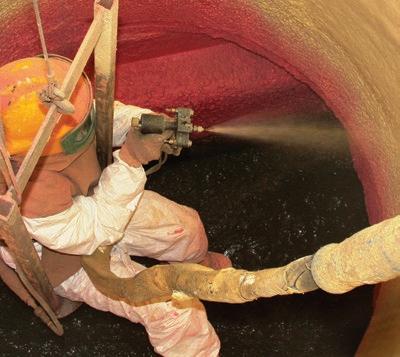
As a result of the long life and competitive installation cost, the life cycle cost for the SpectraShield Liner System is very low. In many cases the ROI is under 24 months.
Groundwater entering the system is reduced, allowing more to percolate to the aquifer. Reduced pumping requirements reduce energy use reducing the carbon footprint. SSOs (Sewer System Overflows) are reduced as infiltration is reduced.
The Spectrashield Liner System provides a protective barrier that prevents H2S and moisture from reaching the surface of the structure.
The SpectraShield Liner System can be installed in a typical 7 foot deep manhole in about an hour without any excavation. The manhole may be returned to service immediately upon completion of the installation. An average sized pump station or wet well application takes about 2 days from start to finish. The pump station or wet well may be returned to service immediately upon completion of the installation.
Flexibility
Long Life
Versatile Experience
Cost competitive
The multi-layer SpectraShield Liner System is flexible, allowing it to handle the stresses associated with structure settling, traffic loading, and freeze thaw cycles.
The SpectraShield Liner System has a design life of 100 years and comes with a 10 year manufacturer warranty. The first structures lined in 1993 are still in place, and in good condition.
The SpectraShield Liner System may be used in a variety of structures, such as; manholes, lift stations, wetwells, large diameter pipes, box culverts, headworks, grit chambers, weirs, and package WWTPs.


Since 1993, in-house applicators, and trained certified licensees, have applied the SpectraShield Liner System in over 121,000 structures. Over 12 million square feet of the SpectraShield Liner System have been applied.
The SpectraShield Liner System installation cost is very competitive with all other liners and coatings.


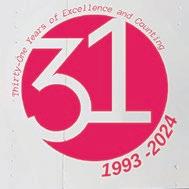



Angela Hail, Process EIT, Stantec Consulting Services, Inc.
Conferences like the Annual New Mexico Water Workshop (NMWW) provide opportunities to share knowledge on protecting one of our most vital resources, water. In honor of NMWW’s 10th anniversary, this year’s theme was “Decade of Water Wisdom & Innovation for the Future.” This theme not only celebrated a decade of success but also set the stage for a comprehensive line-up of presentations. The presentations covered lessons learned from projects, emerging solutions to water challenges, business tools and management strategies, regulatory compliance, and other critical aspects of water preservation and conservation.
This year’s event was held April 10 and 11, 2025, at Hotel Albuquerque. Since its
inception in 2015, NMWW has grown its crowd and resources. From hosting the event at the University of New Mexico Science and Technology Park with only 125 attendees, 24 presentations, and no sponsors, to hosting the event at Hotel Albuquerque for the third consecutive year with about 275 attendees, 44 presentations, 32 exhibit booths, and 15 sponsors.
This year’s platinum sponsors were Carollo Engineers, Stantec, and Jacobs. Total workshop participation has increased each year, proving the growing interest in the event.
Each day of the conference began with a continental breakfast, networking break, and opening remarks by the Rocky Mountain Section American Water Works Association
(RMSAWWA) and Rocky Mountain Water Environment Association (RMWEA) representatives. RMSAWWA was represented by its Past Chair, Charles Leder, P.E., and RMWEA was represented by its Treasurer, Kristin Johansen, P.E. Following the opening sessions were keynote presentations, technical sessions, and networking breaks. The first day’s keynote presentation was delivered by Elizabeth K. Anderson, P.E., who spoke about legislative decisions impacting the 2026 budget for water resource management. On the second day of the conference, Dr. Ladona Clayton addressed the depletion of the Ogallala aquifer due to irrigation farming. Financial incentives are being offered to farmers to cease irrigation farming, on a voluntary basis, while a more
permanent water conservation approach is being developed.
The keynote presentation was followed by a series of technical sessions divided by lunch (day one) and networking breaks. A total of 44 presentations were given over the two days of the conference. Attendees could claim Operator and Professional Engineer (PE) credits for all 44 presentations, including the keynotes. This year, we introduced a track for project managers (PMs) to earn Professional Development Units (PDUs)
for attending presentations. PDU codes were distributed for all presentations except the keynotes. The NMWW Planning Committee is proud to have expanded the types of credits offered and is committed to continuously improving the credit system.
The exhibit hall operated throughout the event and housed 32 booths showcasing products and innovations in the water industry. The exhibit hall fostered networking and collaboration among utilities, manufacturers, engineering firms, and
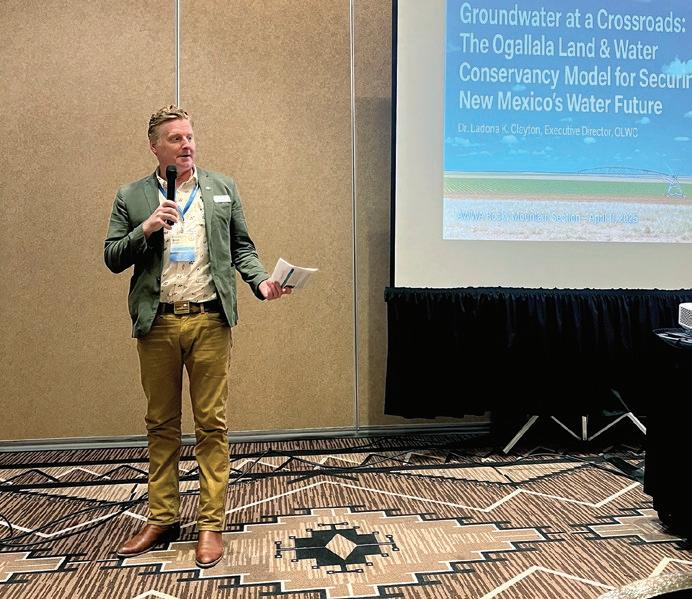
construction companies. As per tradition, a sponsored social event was also held in the exhibit hall on Thursday evening after day one of the conference commenced.
For the third year in a row, Hotel Albuquerque has created a space for attendees to indulge in knowledge and great food!
Lastly, a special shoutout to Patricia Bolliger from Stantec for leading the Planning Committee, along with several volunteers who contributed to this event! Looking ahead, the NMWW Planning Committee eagerly anticipates the 2026 workshop and invites those interested in volunteering to reach out via email at info@rmsawwa.org.

Angela Hail is a Process EIT for Stantec Consulting Services, Inc., where she works on providing water and wastewater solutions in New Mexico and around the country. She has a Bachelor of Science in environmental engineering from New Mexico Tech and a Master of Science in chemical engineering from the University of Florida. In New Mexico, the projects she has been most involved in are the San Juan Lateral Surface Water Treatment Plant pursuit and Animas Public Schools Wastewater Improvements.
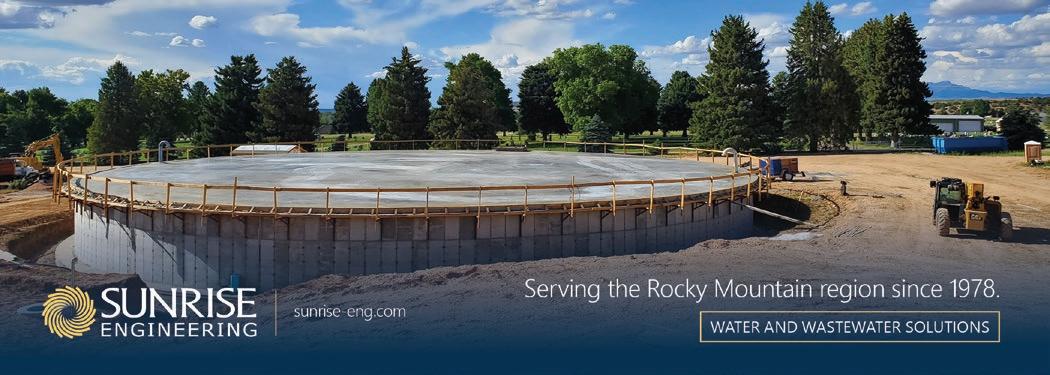

Andrew
Dugan, Editor, Rocky Mountain Water Magazine, and Water Industry Content Writer, WaterWrites
“Colorado brown stain” was coined by Colorado Springs residents to describe the dark stains commonly found on locals’ teeth in the early 20th century. This phenomenon shocked East Coast transplant and dentist Fredrick McKay, who had set up a practice in the city in 1901. Without any clear cause of this widespread tooth discoloration, McKay devoted his career to investigating Colorado brown stain and, along the way, sought to understand why it also prevented tooth decay and cavities. After three decades of travel, research, and collaboration with dentists and impacted communities, McKay identified the culprit: fluoride, a naturally occurring mineral in local geology and soil.
What began as a mission to solve tooth discoloration resulted unintentionally in the widespread fluoridation of American drinking water by the 1960s to prevent tooth decay. The Centers for Disease Control and Prevention (CDC) considers it one of the most significant advancements in modern human health, citing a 25% reduction in cavities among Americans as a result. 60 years later, fluoride’s status as a dental miracle is decaying.
While water fluoridation is only a recommendation on the federal level, 14 states currently hold mandates related to fluoridating drinking water. No state had banned fluoride until late March 2025,
when the governor of Utah, Spencer Cox, signed House Bill 81 into law, banning the addition of fluorosilicic acid, sodium fluorosilicate, and sodium fluoride into Utah’s public drinking water systems. Proponents of the measure question the minerals’ impact on children’s health and IQ. Utah’s fluoride ban went into effect on May 7, 2025, repealing previous state laws that dictated water fluoridation. Weeks later in Salt Lake City, US Health and Human Services (HHS) Secretary Robert F. Kennedy Jr. announced alongside the Environmental Protection Agency’s Lee Zeldin that the agency would “review new scientific information on the potential health risks of fluoride in drinking water,” according to an EPA press release.
Other states are following suit. Florida banned fluoride from drinking water via a larger farm bill, SB 700, which Governor Ron DeSantis signed in May. Leading up to this law, some Florida counties, such as MiamiDade, had already removed fluoride from their water treatment plants. Their actions follow the recommendations of Florida’s Surgeon General, Joseph Ladapo.
Meanwhile, state lawmakers in Austin, Texas, are mirroring their Floridian counterparts. State Senate Bill 2653 has been proposed to the state legislature in an effort to ban fluoride from Texas drinking water. In recent years, the cities of Buda and Abilene have chosen to remove fluoride from drinking water on their own accord. And Texas’ commissioner of agriculture, Sid Miller, has called on Governor Greg Abbott to ban fluoride from drinking water statewide.
Similar actions are being taken by state governments nationwide. From Tennessee to New Hampshire to North Dakota, state bills have been proposed to lower concentrations or completely ban fluoride from drinking water.
Despite state activity, those close to the matter are following what is happening in DC.
The US Public Health Service has recommended fluoride addition to drinking water for over 60 years. This guidance and support from the American Dental Association have led to its consumption by generations of Americans. However, many citizens, judges, and government employees question whether fluoride is studied well enough to confidently state that the health benefits outweigh the health risks.
In 2024, Federal District Court Judge Edward Chen gave the opinion in Food & Water Watch v. EPA that the EPA must do more to prove that the optimal fluoride level recommended by CDC and HHS, 0.7 mg/L, is not unreasonably harmful. This ruling did not decide whether fluoride is an unreasonable risk, but put the onus on the EPA to prove that it wasn’t impacting at-risk communities.
Ultimately, the question of fluoridation in Rocky Mountain states’ drinking water is in the hands of EPA’s Lee Zeldin.
What has been a decades-long health standard may see a complete pendulum swing in the opposite direction. Neither Wyoming, Colorado, nor New Mexico are among the 14 states that mandate fluoride in drinking water, so federal action and public opinion could swiftly redirect fluoride’s future in Rocky Mountain communities. While removing fluoride won’t affect drinking water quality, its dental health impacts have already been witnessed in cities that have banned fluoride.
The Canadian city of Calgary, Alberta, removed fluoride from its drinking water in 2011, citing cost savings as the primary reason. After a decade, the city government reversed its decision after noting an increase in cavities in local children, especially those who lacked consistent
access to dental care. Fluoride was reintroduced into Calgary’s water system in March 2025, the same month that Utah’s governor signed its statewide fluoride ban. What began as a dentist’s quest to solve the mystery of Colorado brown stain is unfolding into one of the most debated public health questions of our time. Whether fluoride keeps its place in national public health policy is now being decided in city council meetings, state legislative sessions, and federal agencies. I’m writing this in late May 2025; more developments on fluoride will likely occur when this goes to print.

Andrew Dugan is the editor of Rocky Mountain Water magazine. He operates WaterWrites, a copywriting, editing, and creative strategy agency specializing in the water industry.
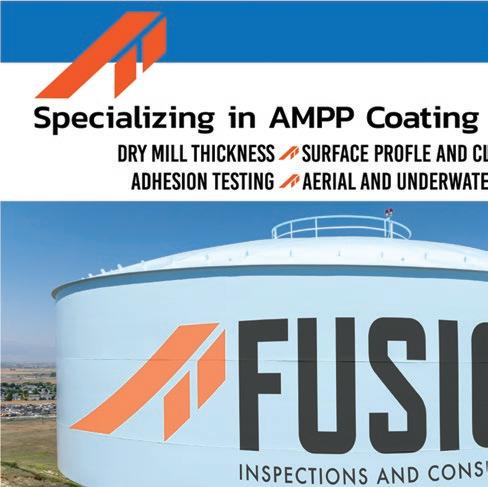





Michelle Christopher, Source Water Protection Specialist, Wyoming Association of Rural Water Systems
The Wyoming Association of Rural Water Systems (WARWS) hosted the 34th Annual Spring Training Conference April 15-18 in Casper, WY at the Ramkota Inn. The WARWS mission statement is, “Quality on Tap!” We accomplish this by providing training in multiple forms, including certification assistance, onsite technical assistance, hands-on and continuing education classroom sessions. This training conference is part of the continuing education aspect.
More than 250 water and wastewater professionals were in attendance, with 67 vendors and over 38 instructors providing quality training on a wide variety of topics. While these numbers may seem small to other states, the operators represented 212 of the 320 public water and wastewater systems in Wyoming. Roughly 6500 man-hours of training for Wyoming Water and Wastewater Operators were received at this annual event.
The theme of this year’s conference was Gathering Our Resources, and gather we did. Rate setting, asset management and the latest technology were on display. Operators are one of the most important resources any system possesses. Several classes were devoted to “growing” the state’s operators so they can meet the widely varied demands of their positions. These classes included communication and being safe in our work. The conference also gave plenty of time for operators to talk and learn from each other. There is nothing better.
The training topics varied from regulatory updates, emerging contaminants, emergency response, and sustainability. As always, the most popular training track was the Hands-On and Tours. Operators were able to see live tapping demonstrations, hydrant demonstrations, and tour the Natrona County Regional Wastewater Facility. One class the operators particularly enjoyed was the Operator Essentials class taught by WARWS Circuit Rider Brian Linton. Brian made the class a hands-on buffet of valves, backflow prevention, pumps and even a working model of the City of Lander distribution system.
The EPA Region 8 Drinking Water Team gave regulatory updates regarding PFAS and the Lead and Copper Rule. Of particular note was that Cyrus Western, newly appointed EPA Region 8 Administrator, came to speak to the operators. He discussed agency and administration priorities as well as addressed questions from the audience. Mr. Western also met with the WARWS Board to have a one-on-one discussion of issues that systems are seeing, expressing and questioning. US Senator John Barrasso also addressed the Annual Business Meeting for the Association, updating voting delegates on DC happenings, how those will affect

the water industry and expressing his thanks for the job licensed water operators do for Wyoming and the nation daily. US Senator Cynthia Lummis kicked off the conference with a prerecorded message of thanks for the job of licensed water operators. All three Congressional Office staff attended and participated in questions and answers for conference attendees, as well as regulatory personnel and other presenters.
The annual Best Tasting Drinking Water contest was held. This year, quite a few drinking water systems brought samples to compete for the title. These samples came from across the state and represented a variety of systems: groundwater, surface water, large utilities (for Wyoming) and small utilities. Preliminary rounds were conducted on Wednesday to narrow the field to the four finalists. The finalists were Nordic Ranches Water Co., Town of Meeteetse, Grand Targhee Resort and the Town of Ten Sleep. The finals were held on Thursday during lunch. The panel of celebrity judges for the


Davis Wolf of Core and Main, Jaymie Lien, Wyoming Representative, House District 38, Ron Overson, operator for Grand Targhee Resort, Paul Fulgham, Utah NRWA Director
final round were Davis Wolf of Core and Main, Jayme Lien, Wyoming State House District 38 Representative, and Paul Fulgham NRWA Director from the Rural Water Association of Utah and Secretary of the National Rural Water Association Board of Directors.
After careful deliberation and some heckling, Grand Targhee Resort was selected as the winner. Grand Targhee operator Ron Overson will represent Wyoming at the Great American Drinking Water Taste Contest in Washington DC at the NRWA


Rally in 2026. This marks Grand Targhee’s fourth win at the state level. They also won the 2024 state competition and represented Wyoming at the Great American Taste Test in February of 2025, placing in the top 10 nationwide (for the fourth time). This marks the second time in 20 years we have had back-to-back winners at the state competition. The Town of Ten Sleep won in 2017 and 2018, placing in the national top ten in 2018 and taking home the Silver Medal in 2019. Aspen Pines Water and Sewer District in Teton County is also a multiple state winner (three times) and took home the Gold Medal in 2017 as the Best Tasting Drinking Water in the Country. The Town of Afton was a top-five winner in 2005 at the national contest, and the Town of Saratoga also placed in the top five in 2023.

Michelle is the Source Water Protection Specialist for Wyoming Association of Rural Water Systems. She holds a Wyoming Level 4 Water Treatment license with the WPI Professional Operator Designation as well as Wyoming Level 2 licenses in Distribution, Collection and Wastewater Treatment. She obtained a Bachelor of Science in Range Ecology and Watershed Management from the University of Wyoming.
AECOM’s objective is to provide water clients with access to globally sustainable technologies, delivered locally. AECOM continues to remain committed to the world’s need for safe, reliable water while protecting this critical natural resource for the future.
With offices across the Rocky Mountain Region, our professionals work in and across the major markets to deliver comprehensive solutions that safeguard human health and the environment.


















































At Haskell, we believe in breaking barriers and creating opportunities. By supporting and empowering women in the water construction industry, we are fostering a more inclusive and dynamic environment where everyone can thrive. Together, we are building a world where clean water is accessible to every person, everywhere.
2024 ENR INTERMOUNTAIN CONTRACTOR OF THE YEAR Design-Build |




Scan to learn more about our commitment to you. We Create Things That Matter.



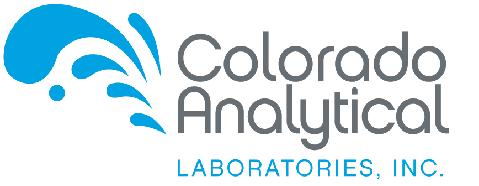

Biochemical Oxygen Demand
Total Suspended Solids
Ammonia-Nitrogen
Nitrate and Nitrite Nitrogen
Kjeldahl-Nitrogen (TKN)
E-Coli, Total Coliform
Metals by ICP-MS and ICP-OES
SOC/VOC
Biosolids-503 Regs/Fecal Coliform
NPDES Requirements
DMRQA Study Participant

Organic Contaminants (SOC/VOC)
DBP (THM/HAA, TOC/ALK)
Inorganic Contaminants (Metals)
Nitrate and Nitrite Nitrogen
Copper and Lead
Total Coliform
Fluoride
Metals by ICP-MS and ICP-OES
Compliance Auto-Ship Bottle Program
VISITONEOFOURCONVENIENTLOCATIONS FOR MODERNDAYTECHNOLOGYAND OLD-FASHIONED SERVICE!
CO 80640

Meghan Wilson Outcalt, Water Quality Senior Manager, City of Boulder, Vice Chair, RMWEA Government Affairs Committee
and
Cassidi Rosenkrance, Water Quality and Treatment Manager, Denver Water, Chair, RMSAWWA Colorado Water Utility Council.
In April, hundreds of water professionals from across the country gathered in Washington, D.C., for the Annual National Water Policy Fly-in. Participants from RMWEA and RMSAWWA met with all Members of Congress in Colorado, New Mexico and Wyoming to highlight the critical need for infrastructure funding, advocate for common-sense PFAS legislation and ask for support for a bill that would require labeling on so-called “flushable” wipes.
We caught up with two veteran Fly-in participants to learn more about why water advocacy is important and what they see as successes and challenges in working with Congress.
Carol Martinson is a Process Engineer at Providence Engineering and Environmental Group in Wyoming and has been attending the Fly-in for five years.
Q: What is something you’ve learned from attending the Fly-in?
CM: Consistently showing up and being clear about what our industry needs are critical when talking to legislators. If you don’t ask for it, it definitely won’t happen. We need to help legislators understand what our industry is facing and what our concerns are.
Q: The pace of making change at the federal level can sometimes seem really slow, at least in the water sector. What are some successes you’ve seen since you’ve been attending the Fly-in?
CM: General understanding and support for the needs of the water industry are better understood in Washington since I started attending the Fly-in five years ago. We’ve highlighted PFAS, the “flushable” wipes issue, and funding needs. Once we start talking about it, the understanding is better.
A specific example is when Senator Lummis (R-WY) introduced the bill to protect utilities from PFAS liability. That was a clear request and an example of “it won’t happen if you don’t ask for it.” We’re still working on getting a PFAS liability bill passed, but it’s progress.
Q: What stood out for you this year?
CM: With shrinking budgets across the country, it’s important that we as water professionals continue to explain the importance of programs like wastewater-based epidemiology, state revolving funds and grant programs – things that are impactful to our communities. People can’t always see the benefits of water and
Consistently showing up and being clear about what our industry needs are critical when talking to legislators. If you don’t ask for it, it definitely won’t happen. We need to help legislators understand what our industry is facing and what our concerns are.


wastewater investments. It’s our job right now to explain the value of those clearly, so we don’t lose the support that we’ve gained over time.
Although it was more chaotic in Washington this year, we also had more involvement than other years at the Fly-in, including a large contingency of young professionals because of the success of the YP Fly-in scholarship program. It was fantastic to see new energy from new people learning how to participate and being so excited to be there.
Q: How can people get involved in water advocacy even if they can’t go to D.C.?
CM: People can have a huge impact through the WEF Water Advocates Program and by contacting their legislators to express concerns. The Advocates Program makes it easy. Right now, there are messages on the benefits of biosolids, PFAS liability protection for utilities, and the “flushable” wipes bill. Legislators also have offices in your state, so you can easily contact them, tell them who you are, why you care about water, and what you need from them.
Q: What’s the most fun thing about attending the Fly-in?
CM: Connecting with other water professionals who are as passionate as we are. There’s nothing that quite provides the same energy boost as being around our friends and colleagues in the water industry.



Julie Tinetti is the Regulatory Compliance Manager at Highlands Ranch Water in Colorado. With over a decade of experience in her role, she has attended the last three consecutive National Water Policy Fly-ins in Washington, D.C.
Q: What is something you’ve learned from attending the Fly-in?
JT: One of the most valuable lessons I’ve learned is the power of collective advocacy. When we come together as a unified voice from across the country, it amplifies our message and helps legislators understand that these issues are not isolated; they’re national in scope. The Fly-in is a unique opportunity to present a consistent, coordinated message to Congress, and I’ve seen firsthand how that can shift perspectives and open doors for meaningful dialogue. It’s also taught me that persistence matters. Change doesn’t happen overnight, but showing up year after year builds credibility and trust.
Q: The pace of making changes at the federal level can sometimes seem really slow, at least in the water sector. What are some successes you’ve seen since you’ve been attending the Fly-in?
JT: Progress can feel incremental, but it’s real. One of the most encouraging developments I’ve seen is the growing awareness and support for a PFAS CERCLA exemption for water and wastewater utilities. When I first started attending, there was a lot of confusion and hesitation around this issue. This year, however, Colorado’s congressional delegation seemed much more informed and receptive. That shift didn’t happen by accident; it’s the result of sustained advocacy and education. It’s rewarding to see our efforts begin to bear fruit, even if we’re not at the finish line yet.
Q: What stood out for you this year?
JT: This year, I was struck by the level of engagement from new legislative staffers in Colorado’s congressional offices. Many of them were eager to learn and asked thoughtful questions about the challenges utilities are facing. It was a reminder that part of our job is to be educators; we’re not just asking for support, we’re helping policymakers understand the real-world impacts of their decisions. I also noticed a stronger sense of camaraderie among








the Fly-in participants. There’s something energizing about being surrounded by people who are just as passionate about water as you are.
Q: How can people get involved in water advocacy even if they can’t go to D.C.?
JT: There are so many ways to make your voice heard without ever stepping foot in Washington. Writing letters or emails to your congressional representatives is incredibly impactful, especially when you can share a personal or local perspective. Joining a coalition of like-minded utilities or professional organizations can also amplify your message. I always recommend the WEF Water Advocates Program, it’s a great resource that makes it easy to stay informed and take action. And don’t forget about local offices, your representatives have staff in your state who are often more accessible and just as influential.
Q: What’s the most fun thing about attending the Fly-in?
JT: For me, it’s the people. Meeting water professionals from all over the country, sharing stories, and learning from each other, it’s incredibly inspiring. There’s a sense of shared purpose that you don’t always get in your day-to-day work. The Fly-in recharges my batteries and reminds me why I do what I do. It’s also a great opportunity to mentor
newer professionals and help them find their voice in advocacy. Watching young professionals step into this space with enthusiasm and confidence is one of the most rewarding parts of the experience. Are you interested in attending a future Fly-in? RMWEA members are encouraged to get involved in the Government Affairs Committee to learn more. We’re always looking for committee members from diverse places and backgrounds! Email Leah Cribari at lcribari@bouldercolorado.gov or Meghan Wilson Outcalt at wilsonm@bouldercolorado.gov for more information.

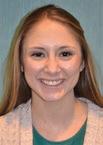
Meghan Wilson Outcalt is the Water Quality Senior Manager at the City of Boulder and the Vice Chair of the RMWEA Government Affairs Committee.
Cassidi Rosenkrance is a Water Quality and Treatment Manager at Denver Water and is currently serving as the chair of the RMSAWWA Colorado Water Utility Council.



























EVERY DAY, WE MAKE AMERICAN BETTER AMERICAN never stops innovating. We’re always breaking new ground in our technology, processes, and quality. This commitment to the future means ever-higher reliability, confidence, and sustainability – aligning with your needs. Throughout our history, the Right Way has meant giving you confidence in our products and our expertise. And, above all, your future.

































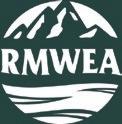


Patti Zietlow,
Nutrient levels in Colorado’s waters present an ongoing challenge.
The biodiversity and health of Colorado’s aquatic ecosystems depend on the delicate balance of nutrients, especially nitrogen and phosphorus. From ensuring safe drinking water to protecting aquatic life, Colorado’s water quality regulations play a key role in maintaining this balance.
In 2012, Colorado’s Water Quality Control Commission (WQCC) adopted Regulation 85. This regulation sets numeric nutrient effluent limits for domestic wastewater treatment plants and requires monitoring of discharges and surface water for nutrients and related parameters. The purpose of the monitoring is to develop a database that can be used to understand nutrient sources and their current levels, to evaluate the effectiveness of Regulation 85 in reducing nutrient concentrations in Colorado’s water bodies, and to inform future nutrient regulations and standards. To accomplish this, the regulation directs wastewater treatment plants to develop, implement and document a routine water quality monitoring program. Enter the Arkansas Fountain Coalition for Urban River Evaluation (AF CURE).
AF CURE began when several of the Arkansas River Basin wastewater treatment entities participated in the Regulation 85 stakeholder process. Recognizing the value in working together, several of the wastewater entities engaged the Pikes Peak Regional Water Authority (PPRWA), an existing statutory legal organization without specific geographical authority
limits, to form AF CURE. AF CURE is subject to contractual relationships and oversight by the PPRWA. All participants in AF CURE are required to be dues-paying members of the PPRWA. AF CURE is now a coalition of nine domestic wastewater treatment entities located on the Southern Front Range of Colorado to implement Regulation 85 monitoring requirements and safeguard Colorado’s Arkansas River Basin waters.

AF CURE subsequently developed and implemented a Regulation 85 compliant sampling and analysis plan (SAP) for wastewater effluent and for Fountain Creek, Monument Creek, Chico Creek, and the Arkansas River from Pueblo Reservoir to John Martin Reservoir, including tributaries. Several wastewater treatment plants discharge to surface waters within the watershed covered by AF CURE’s SAP.



Sampling locations were selected to monitor the impact of the wastewater treatment plant discharges, tributary flows, diversion points and overall flux of the parameter loading both within the watershed as a whole and along the river segments. The sampling locations and parameters monitored were divided between AF CURE members. 71 locations are collectively
monitored by the nine AF CURE members for Regulation 85 and/or other purposes. Regulation 85 required data is submitted to the Colorado Department of Health and Environment Water Quality Control Division via the Colorado Data Sharing Network, and is accessible to the public.
In addition to meeting Regulation 85’s monitoring requirements, AF CURE conducts



baseline water quality sampling throughout the watershed. These data support several purposes, including long-term monitoring of the health of the watershed, providing data to identify waters that do not meet water quality standards (303(d) evaluations), and potential site-specific standard proposals for nutrients and other parameters. Since the Water Quality Control Division (WQCD) sets wastewater effluent discharge limits based in part on the receiving water body’s water quality standards (WQCC Regulations 31-39), AF CURE’s data is invaluable in making data-driven decisions. It can also inform in cases where there is enough uncertainty, for entities to propose a different protective standard for that specific water body. If adopted by the WQCC, these new standards may result in a more readily attainable discharge limit for wastewater treatment plants, while still being protective of the designated uses in that waterbody.
The WQCD is intending to revise Regulation 85 to continue to make progress on nutrients. AF CURE plans to be an active participant in this stakeholder process to ensure changes made will make a meaningful positive impact on Colorado’s waters while being reasonable, affordable, and implementable for the wastewater community. By collaborating, the nine wastewater treatment entities that comprise AF CURE have been successful at creating an ongoing, cost-effective, and efficient monitoring program. This program not only complies with Regulation 85 but also ensures data quality and consistency across the watershed by providing valuable data that can be used for numerous purposes.
AF CURE has been and will continue to be an advocate for the wastewater community and the protection of water quality in Colorado’s Arkansas River Basin.

Patti Zietlow is Chair of the Arkansas Fountain Coalition for Urban River Evaluation. She can be reached at pzietlow@csu.org.
Rotary Lobe Pumps Macerating Technology
PROTECTS PUMPS AND SYSTEMS. SOLIDS REDUCTION CONSTANTLY IMPROVED.
+ Consistent Macerating Results
+ Adjustable Maceration


+ Compact, Space-Saving Design
+ Long Service Life
+ Energy Efficient
+ Ease of Maintenance (MIP ® )




+ Large Selection of Component Materials




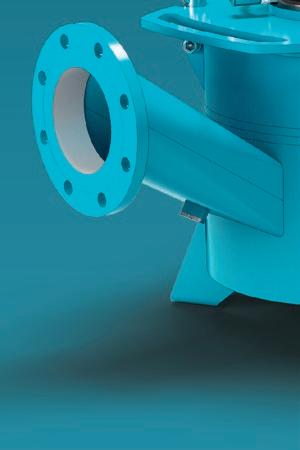
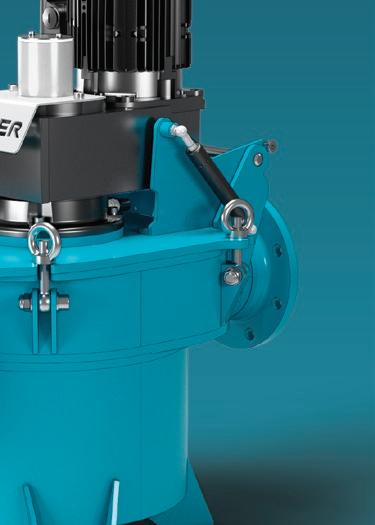

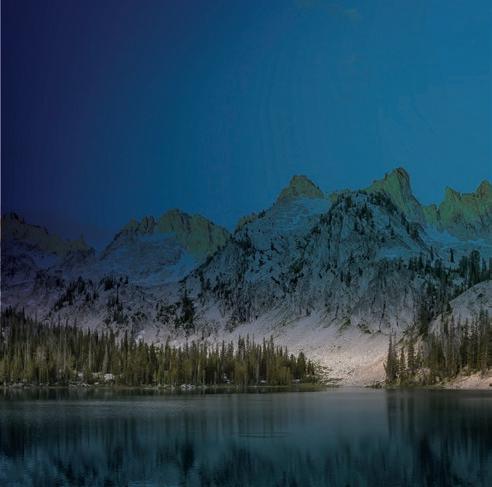





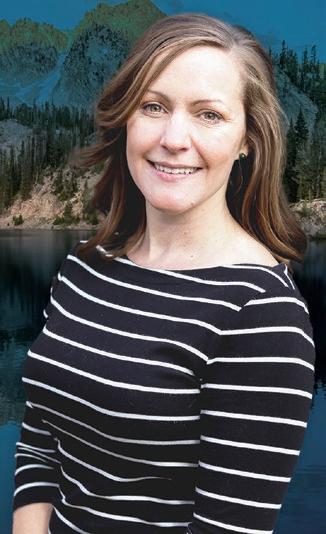







Michelle
Young, PhD, is a Senior Wastewater Technologist with Carollo Engineers
As the water and wastewater sector navigates significant workforce transitions and political pressures, mounting infrastructure demands, and increased regulatory expectations, the imperative to recruit and retain skilled professionals has never been greater. Attracting and supporting a diverse workforce is not only a matter of fairness, but it is a strategic priority. Diversity, Equity, and Inclusion (DEI) initiatives, regardless of terminology, continue to play a vital role in workforce development, operational sustainability, and innovation within the water sector.
The water sector is facing a welldocumented talent gap. According to national workforce data, a significant percentage of utility employees are approaching retirement age, and fewer young professionals are entering the field. The US Bureau of Labor Statistics puts the
median age of water sector employees at 48, which is six years above the national median employee age. Expanding access to underrepresented groups, whether through outreach, apprenticeship programs, or inclusive hiring practices, broadens the talent pipeline and strengthens long-term resilience. Representation ensures the industry reflects the communities it serves, builds trust, and enhances service delivery.
Despite the increasing use of DEI-related language, confusion around core definitions persists. It is important to clarify:
• Diversity refers to the range of human differences, including but not limited to race, gender, age, disability, and veteran status. It can also mean professional diversity, incorporating voices from small, rural systems alongside those from large, urban utilities.
• Equity focuses on fair access to opportunities. It recognizes that some professionals face barriers others do
not, and that removing those barriers is necessary to achieve real fairness.
• Inclusion is about creating workplace environments where all employees feel respected, supported, and able to contribute meaningfully. Through the inclusion of all employees, employers gain broader insight, stronger collaboration, and improved problem-solving, ultimately enhancing organizational performance. It is important to note that DEI does not mean lowering standards or enforcing quotas. It does not entail hiring unqualified candidates or engaging in reverse discrimination. Instead, it is about expanding opportunity and improving systems so that talent and potential can thrive, regardless of background.
In other fields, some concerns about DEI stem from the misconception that opportunities are limited and that expanding
Bringing more perspectives into the industry expands capacity and innovation, not competition. Whether through community partnerships, returning citizen workforce programs, or multi-venue accessible job postings, outreach efforts increase the talent pool and prepare utilities for a more complex future.
access creates winners and losers. In reality, the need for skilled workers, operators, engineers, and innovators far exceeds the current supply. Bringing more perspectives into the industry expands capacity and innovation, not competition. Whether through community partnerships, returning citizen workforce programs, or multi-venue accessible job postings, outreach efforts increase the talent pool and prepare utilities for a more complex future.
Many of the workplace benefits and cultural norms that water professionals value today are the product of inclusive thinking and advocacy. A few examples include:
• Parental leave policies
Parental leave policies which support work-life balance for all families. Initially, leave policies were often limited and primarily focused on birth mothers, neglecting the needs of fathers, adoptive parents, and LGBTQ+ families. DEI efforts have broadened these policies to be more inclusive, recognizing diverse family structures and caregiving roles.
• Accessibility improvements
Accessibility improvements like ramps, elevators, and assistive technologies benefit both staff and the public. These improvements not only assist people with mobility challenges; they enhance safety and allow more efficient movement of people and equipment.
• Collaboration tools and AI-enabled recruitment platforms Collaboration tools and AI-enabled recruitment platforms not only improve our work efficiency but can enhance communication and productivity across a diverse workforce. The collaboration tools provide features like real-time transcription and translation, which are
particularly beneficial for non-native speakers and individuals with hearing impairments. AI-powered recruitment tools can help mitigate unconscious bias by anonymizing candidate information and standardizing interview processes. Other areas that have benefitted from DEI initiatives include employee wellness programs, paid time off, and flexible scheduling.
Inclusion also supports team-based problem-solving, leading to more adaptive and innovative responses to complex operational challenges, especially relevant as the industry faces climate pressures, emerging contaminants, and aging infrastructure.
Water utilities across the country are asking similar questions: Why is retention so difficult? How can we better engage younger workers? These questions have direct ties to inclusion and belonging. When employees feel valued, heard, and supported in their development, they are more likely to remain in the field and grow their careers.
Some strategies can be taken to attract and retain talent, including:
• Update job descriptions to use inclusive and clear language focusing on skills, impact, and growth opportunities.
• Providing diverse career pathways for advancement can include both vertical and lateral options, allowing individuals to maximize their skills, interests, and strengths.
• Offer training, mentorship, and coaching aligned with each career pathway.
• Promoting work-life balance policies supporting employee well-being, which leads to a happier and more focused workforce.
The water sector has a strong culture of teamwork and service. DEI aligns naturally with these values, reinforcing the shared mission of protecting public health and the environment. Moreover, by fostering inclusive leadership and mentorship, utilities can build stronger internal talent pipelines and reduce dependency on external recruitment.
CONCLUSION: INVESTING IN A SUSTAINABLE WORKFORCE CREATES A STRONGER INDUSTRY
Utilities and industry organizations that embrace inclusive practices are better positioned to adapt to change, foster innovation, and maintain public trust. Whether the terminology used is DEI, workforce equity, or inclusive excellence, the core mission is the same: to ensure fair access to opportunity, support professional growth, and create workplaces where all water professionals can thrive.
In the end, DEI is not just about representation. It’s about building stronger, more resilient utilities and a more effective, more unified water sector. As the challenges facing the industry continue to grow, so too must our commitment to the people who keep it running.

Michelle Young, PhD, is a Senior Wastewater Technologist with Carollo Engineers. She received her MS and PhD from Arizona State University in environmental engineering and has more than 15 years of experience in wastewater treatment research and process design. Outside of work, Michelle is a dedicated mom to three bunnies.









































































































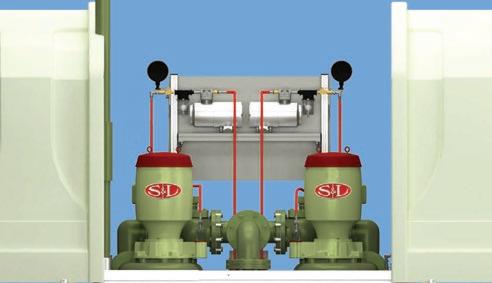





































































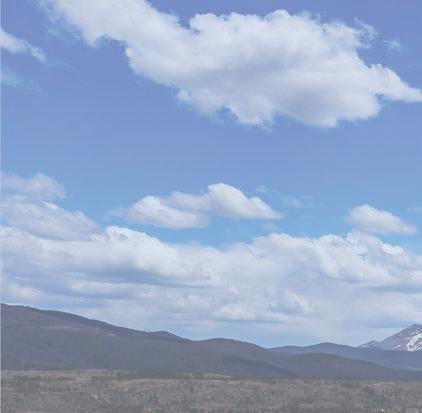




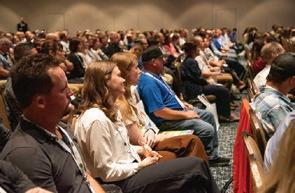

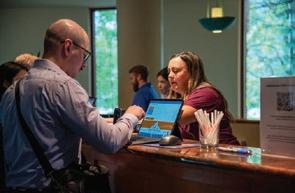

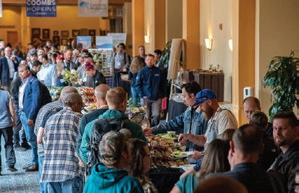




The 2025 Rocky Mountain Water Conference (RMWC) will be held August 24-27 at the Keystone Conference Center in Dillon, Colorado and our theme is "Partnerships to Resolve Water Challenges." This will be the 98th Annual Conference for the Rocky Mountain Section of AWWA (RMSAWWA) and the 88th Annual Conference for the Rocky Mountain Water Environment Association (RMWEA).

More than 1,400 attendees are expected including utilities, managers, operators, vendors, engineers, regulators, students, and others. We are preparing an excellent technical program and are continuing many of the Exhibit Hall and networking features that have made this conference the premier water industry event.
This year’s technical program includes a full day of Operator Training on Tuesday and expanded topics on management, planning, funding, conservation, and treatment. Get an active start on Sunday with a Young Professionals-organized bike ride or the "Is Your Toilet Running?" 5k Fun Run/Walk. On Sunday evening, join us for the Meet and Greet in the Exhibit Hall, followed by a free movie night featuring a special screening of Our Blue World. We will have Rebecca (Becky) Mitchell, the State of Colorado's Commissioner to the Upper Colorado River Commission as the keynote speaker for Monday’s opening general session. Again this year, our Tuesday networking event will feature a cornhole competition benefiting Water Equation and Water For People. And as usual, the popular golf tournament will be held on Sunday at the Keystone River Course.
Join us for these as well as the many other exciting Conference features. We are so excited to be back in Keystone and look forward to seeing you in August!
- Jeff Berlin and Natalia Hoogesteijn, Conference Co-Chairs
Book your room at the Keystone Lodge and Condos: Keystone Resort – Reservations or by contacting 855948-0696 and referring to BKRWAT25. Room rates start at $167/night (excluding taxes and fees) and the room block will be released after August 2 so early reservations are encouraged.
The 2025 Rocky Mountain Water Conference will be held at the Keystone Conference Center, 633 Tennis Club Road, Dillon, CO 80435. Getting to Keystone, Colorado is easy. From the Denver area, travel west on Interstate 70. Exit at the Silverthorne/Dillon Exit #205. At the end of the exit ramp, turn left at the stop light onto Highway 6. Travel 6 miles, follow the signs to the Keystone Conference Center. You can check into your Keystone lodging either by turning right into the Keystone Resort lodging or going directly to the Conference Center (large building on the left) to get housing at the remote kiosk. The Hyatt Place Keystone is less than a mile down the road from the Convention Center.

The Rocky Mountain Water Conference offers multiple sponsorship opportunities. Being a sponsor is a great way to leverage your presence at the conference and put your organization’s name in front of more than a thousand water and wastewater industry leaders from Colorado, New Mexico, Wyoming, and beyond!
To preview sponsorship opportunities and register visit www.rockymountainwaterconference.org.
For questions, contact Elizabeth Carter at 303-619-1656 or carterea@cdmsmith.com
All sponsors receive:
• Recognition in the conference materials and on the Rocky Mountain Water Conference website
• Attendee list before and after the conference
• "Thank You" in post conference wrap-up in the RMSAWWA and RMWEA Rocky Mountain Water Magazine
The Exhibit Hall continues to be the best place to meet with peers and colleagues while learning about the latest equipment and technologies and participate in or watch the exciting competitions.
New this year! Sunday evening's Meet and Greet will be hosted in the Exhibit Hall from 5:00 PM to 7:00 PM to provide even more opportunities to network with fellow attendees and exhibitors.
Please note the Exhibit Hall will only be open during the times listed below:
Exhibit Hall Hours:
Sunday: 5:00 pm – 7:00 pm
Monday: 3:00 pm – 6:30 pm
Tuesday: 3:00 pm – 6:00 pm
Exhibit Hall Events:
Door prizes, appetizers and beverages, Toilet Bowl Trivia, Water Taste Test Competition
We would like to thank the exhibitors for their continued support of the Rocky Mountain Water Conference.




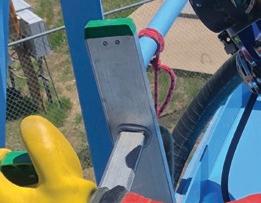



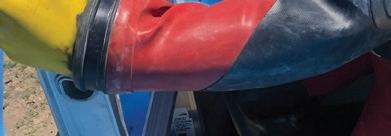





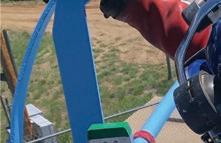




More Than a Dive Company

CDPHE STR Comprehensive Tank
Inspections with Certified Dive Team or ROV
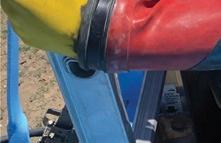
In service tank cleanings with proprietary cleaning system (faster cleaning times)

Summary or full inspection reports, authored by AMPP CIP or PE
Passive CP Installation per AMPP RPO1906-96

Common Tank Repairs

Active Tank Mixing sales and installation
Underwater Ultrasonic Thickness

Readings
Tank rehabilitation cost estimates

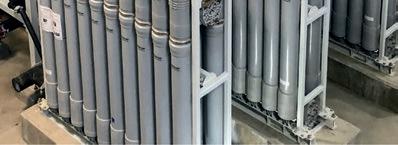






SEPTEMBER 27 –OCTOBER 1, 2025





Rocky Mountain Water is made possible by the companies below who convey their important messages on our pages. We thank them for their support of RMSAWWA and RMWEA and its publication and encourage you to contact them when making your purchasing decisions. To make it easier to contact these companies, we have included the page number of their advertisement, their phone number, and, where applicable, their website.







cdmsmith.com/NEXTisNOW




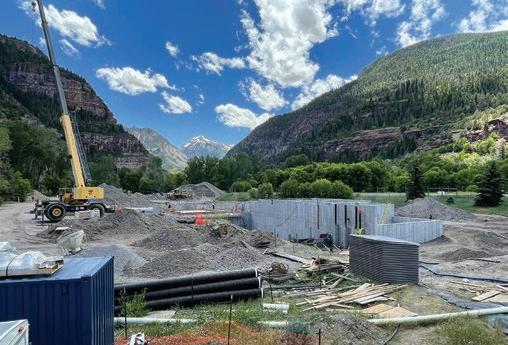





















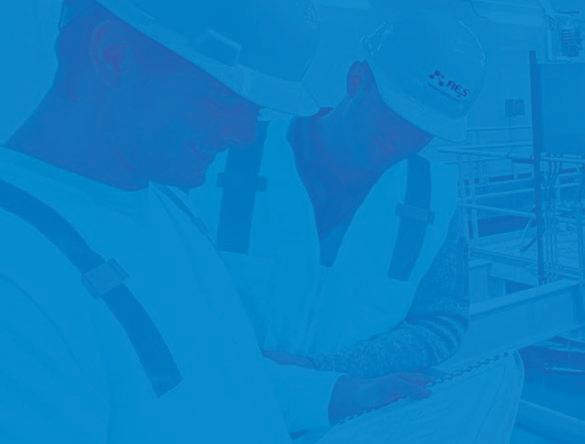

At our very core, AE2S is all about people. Beyond engineering, we are committed to empowering our clients, employee-owners, and all those around us to develop a vision for a better tomorrow.

